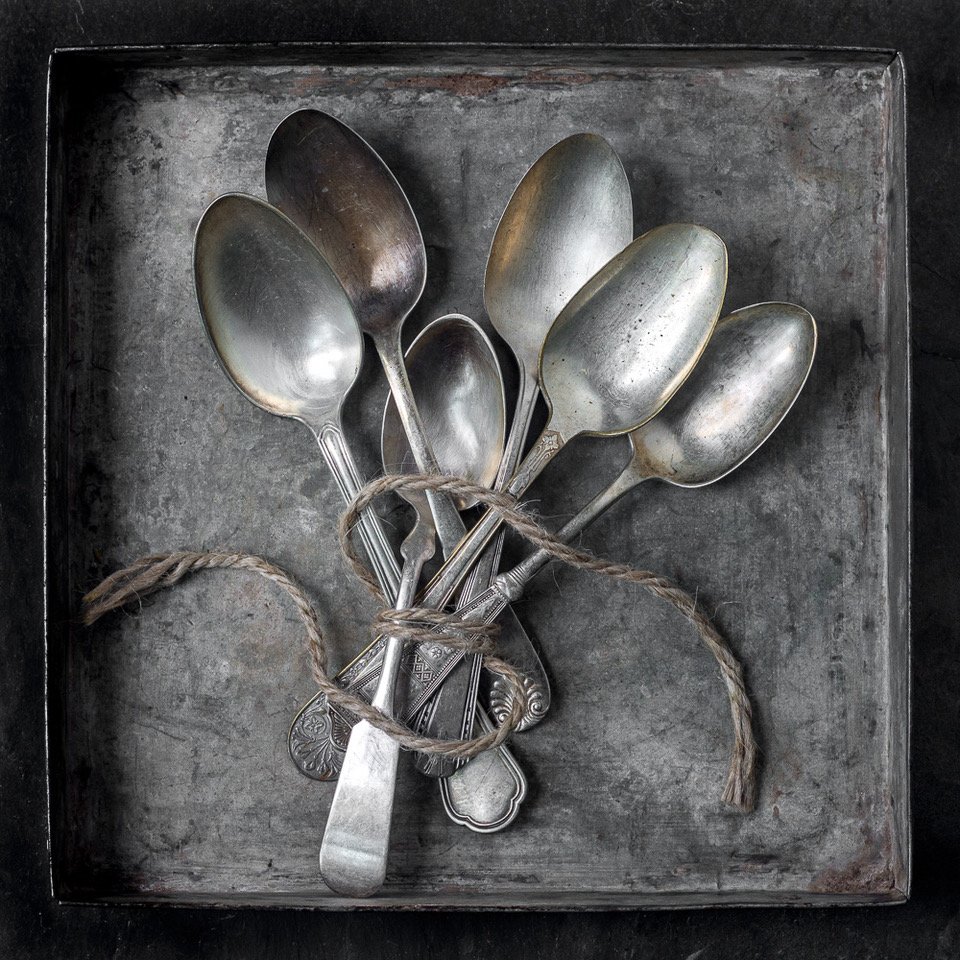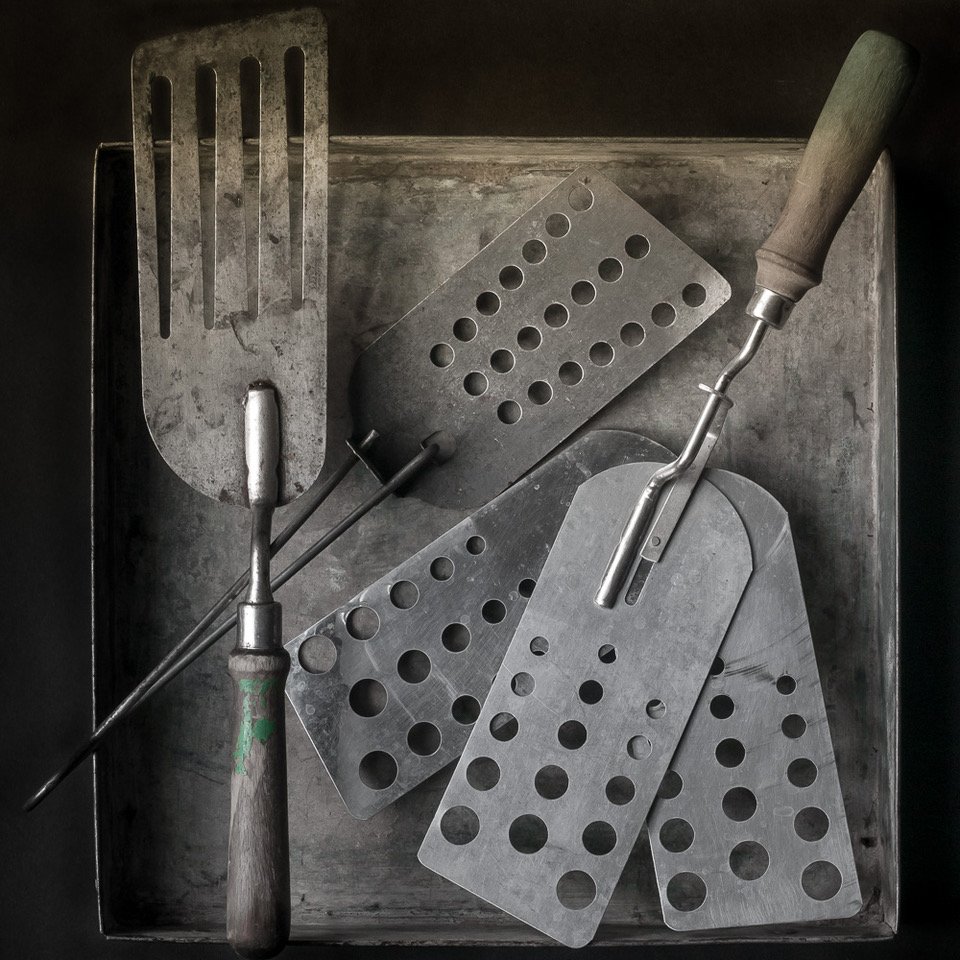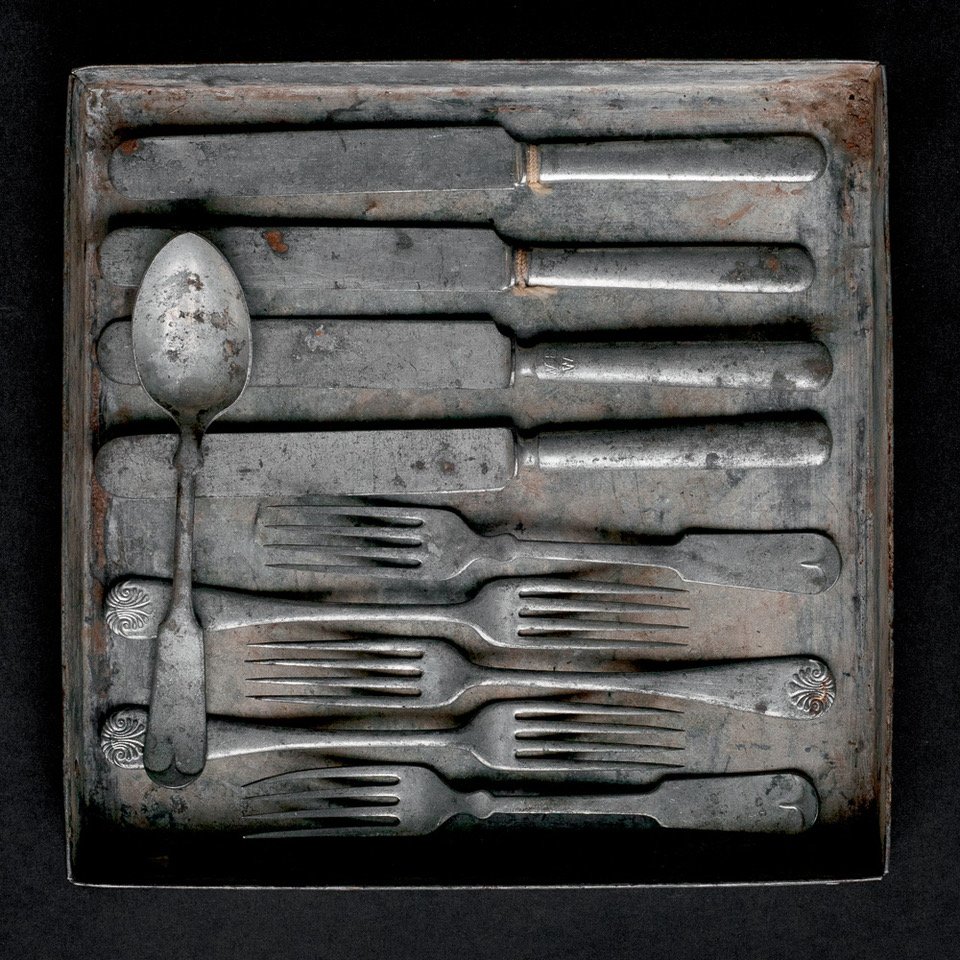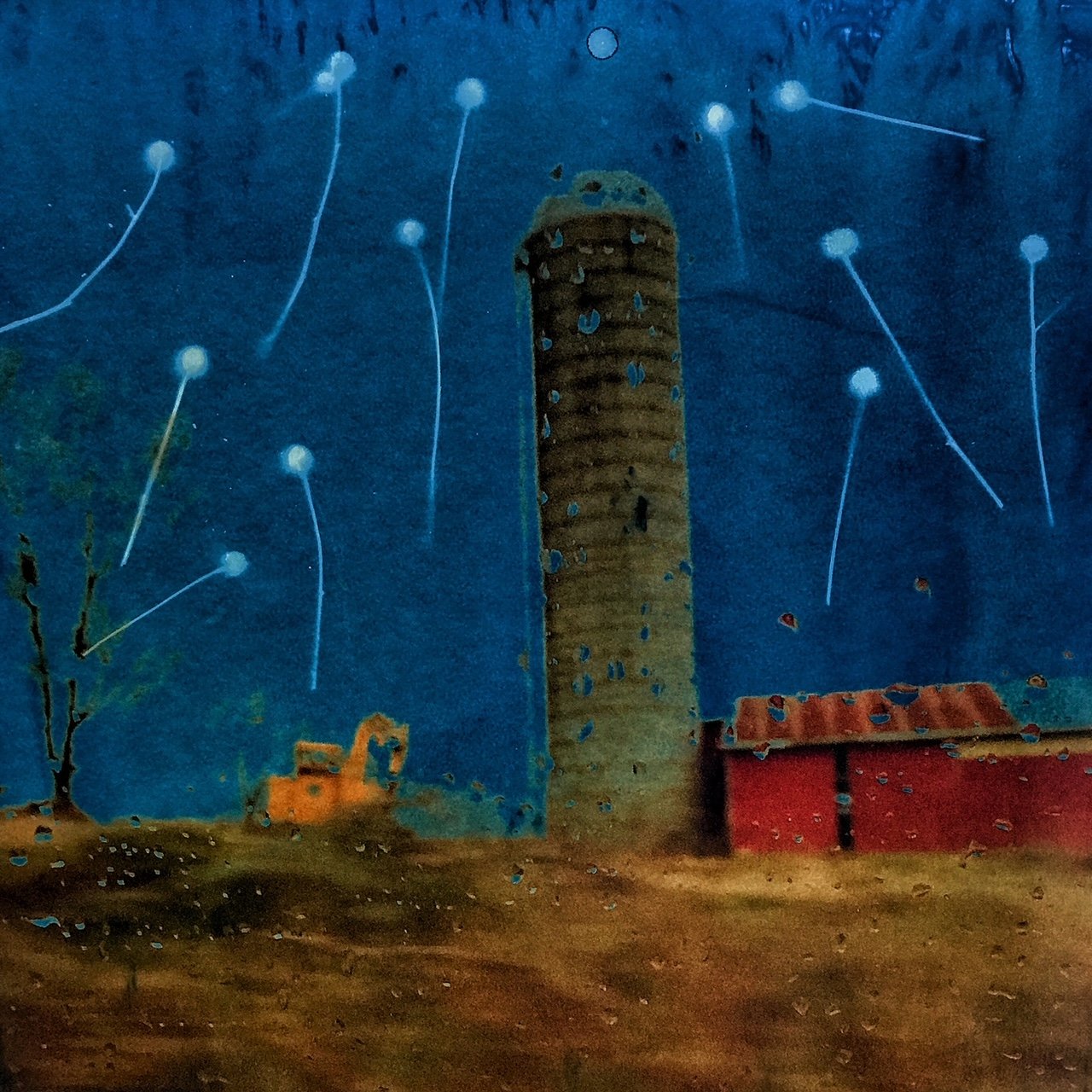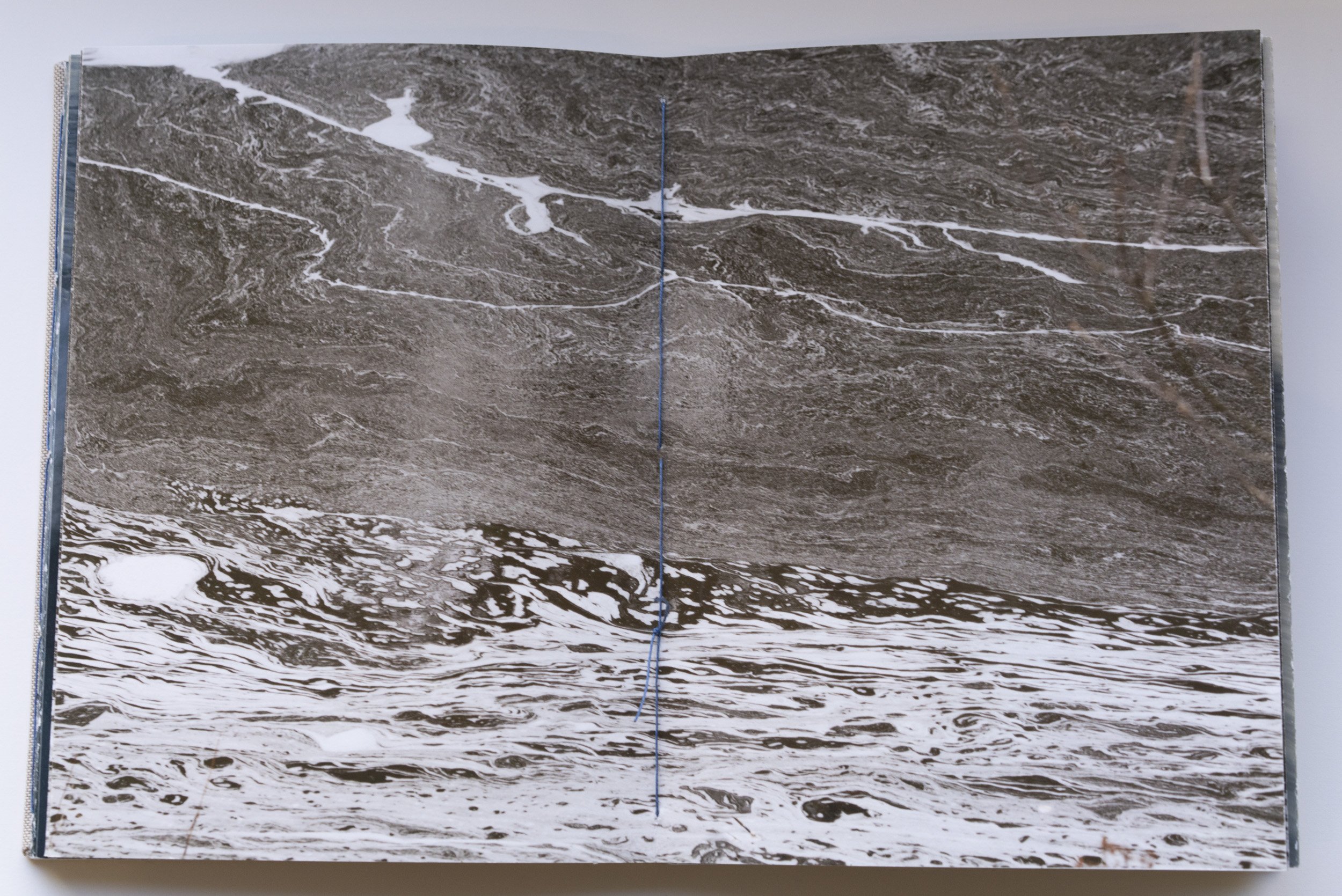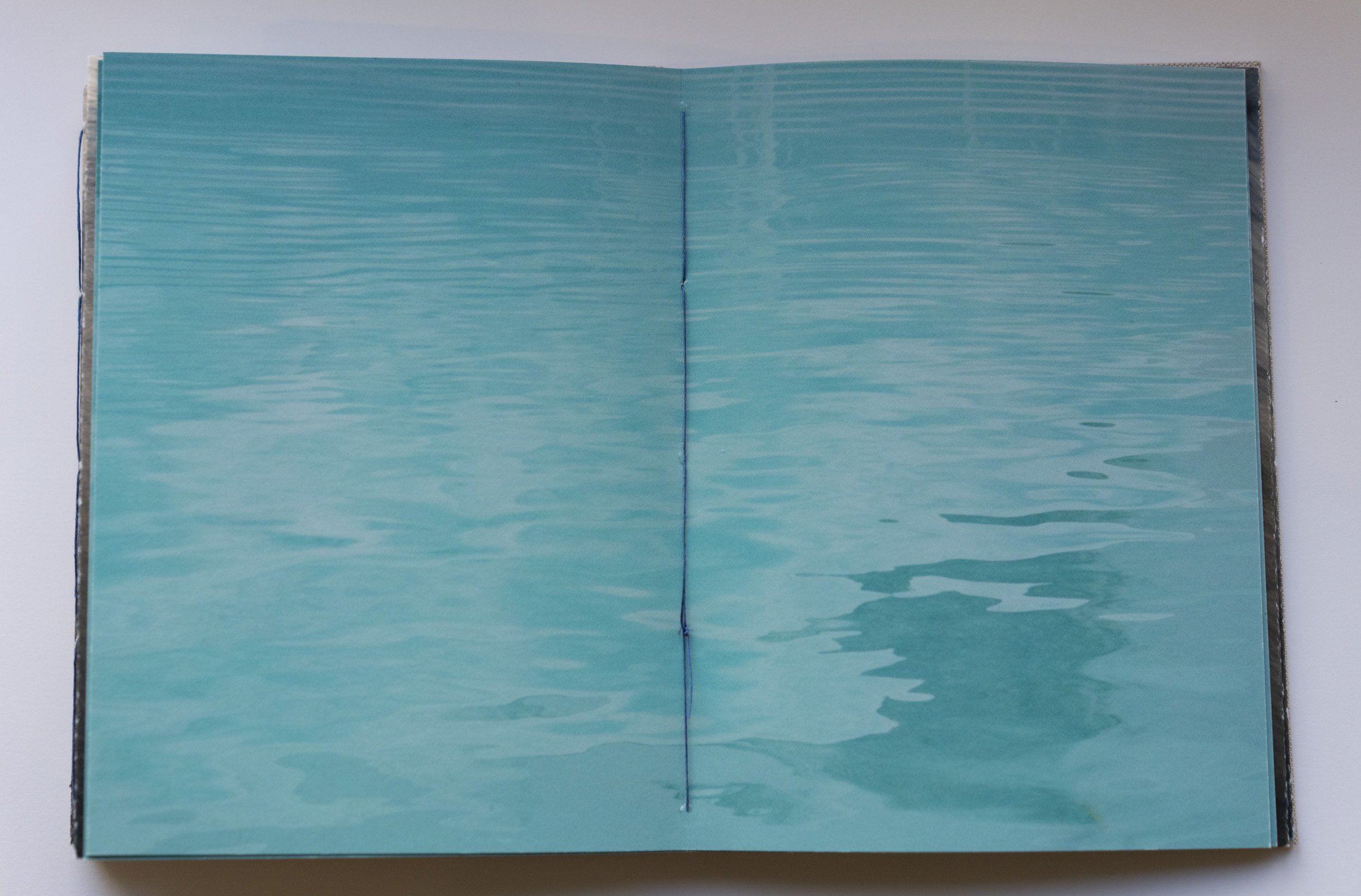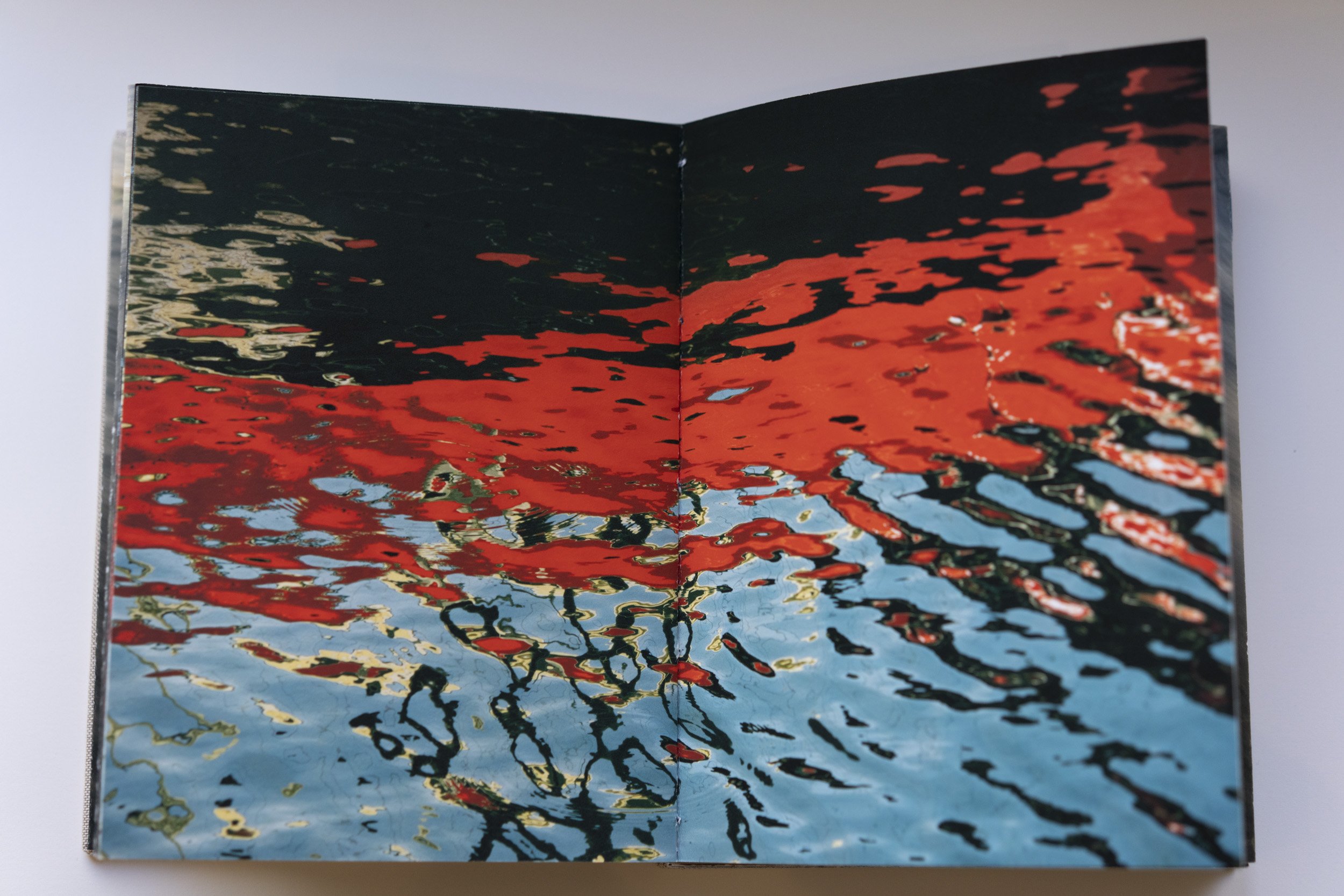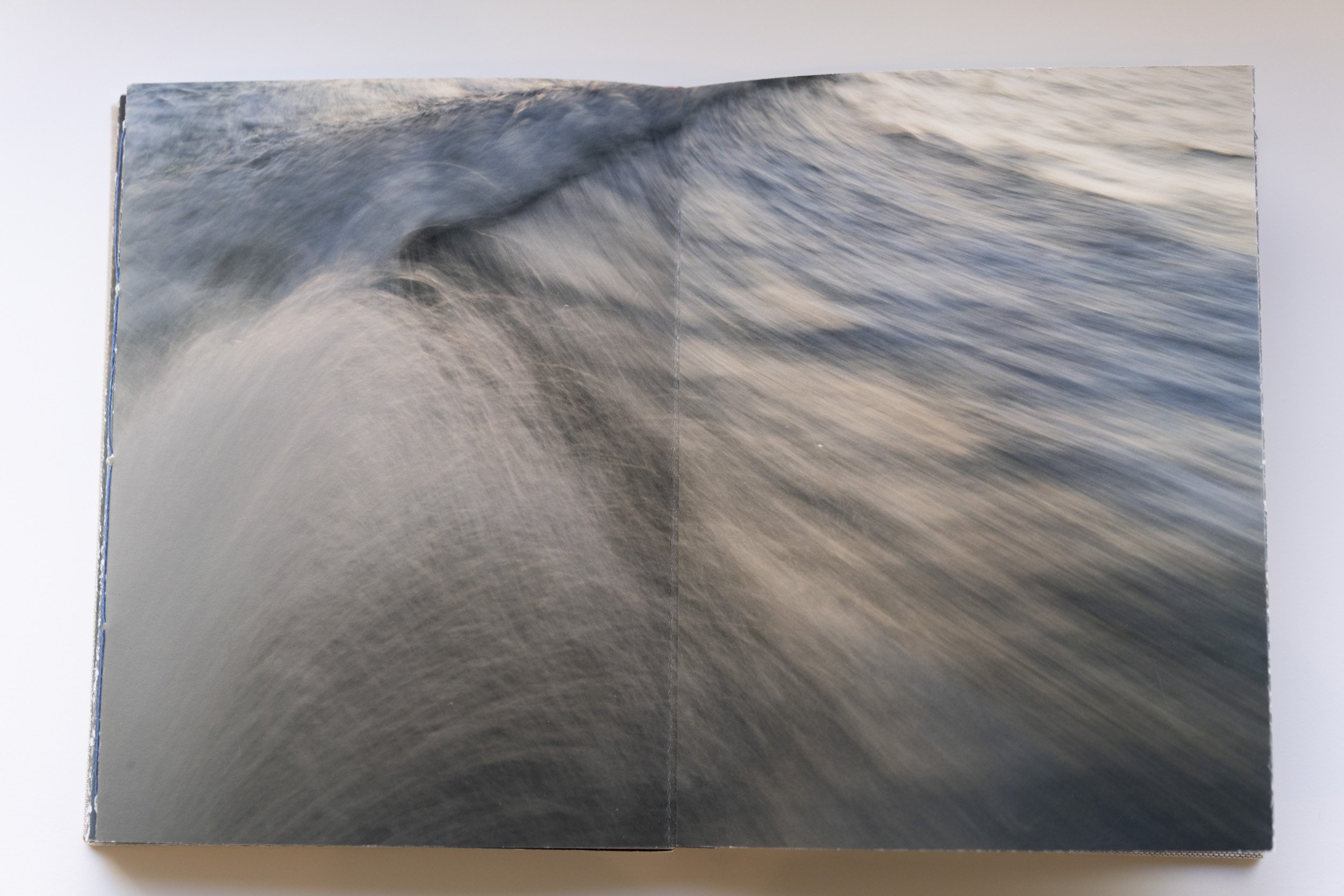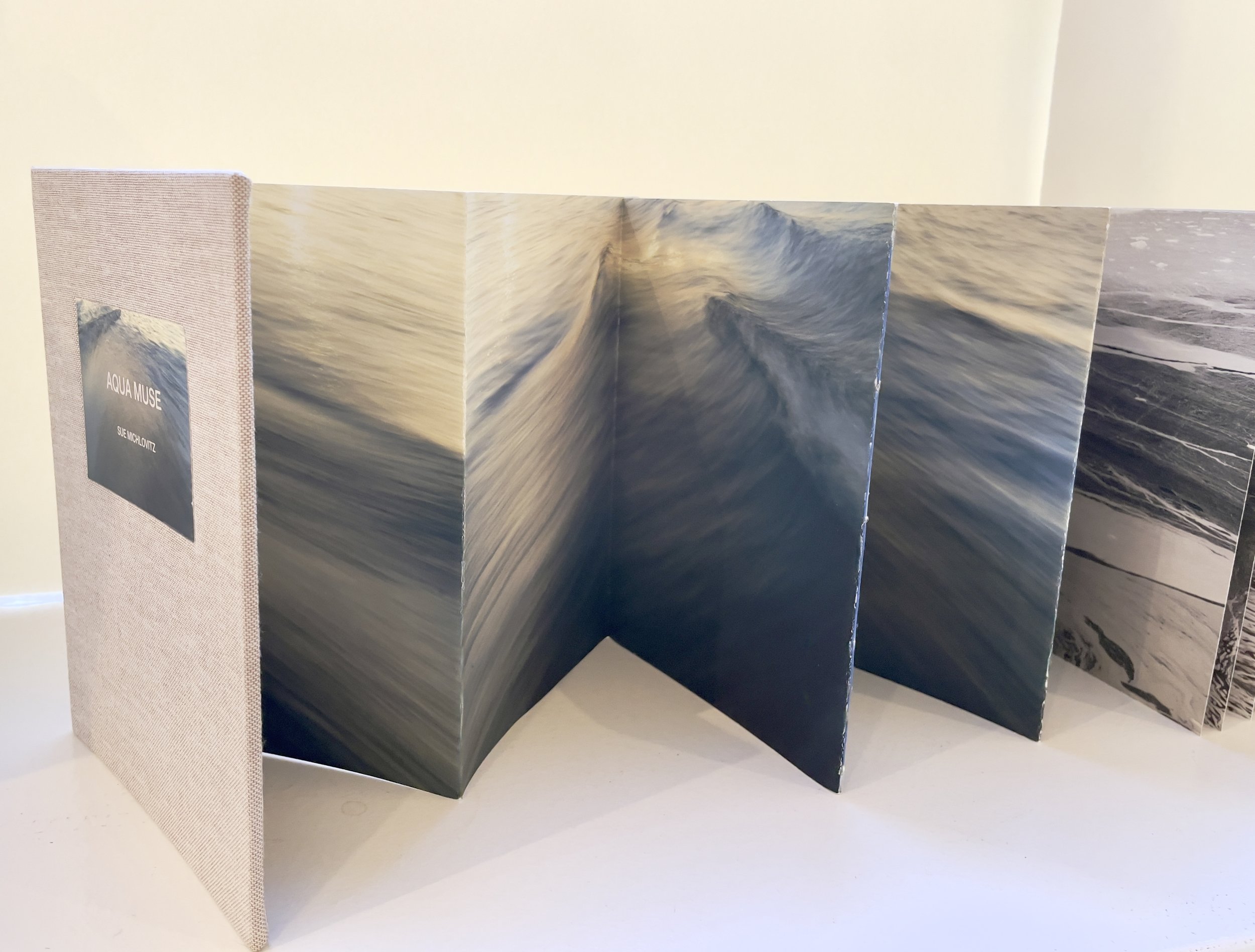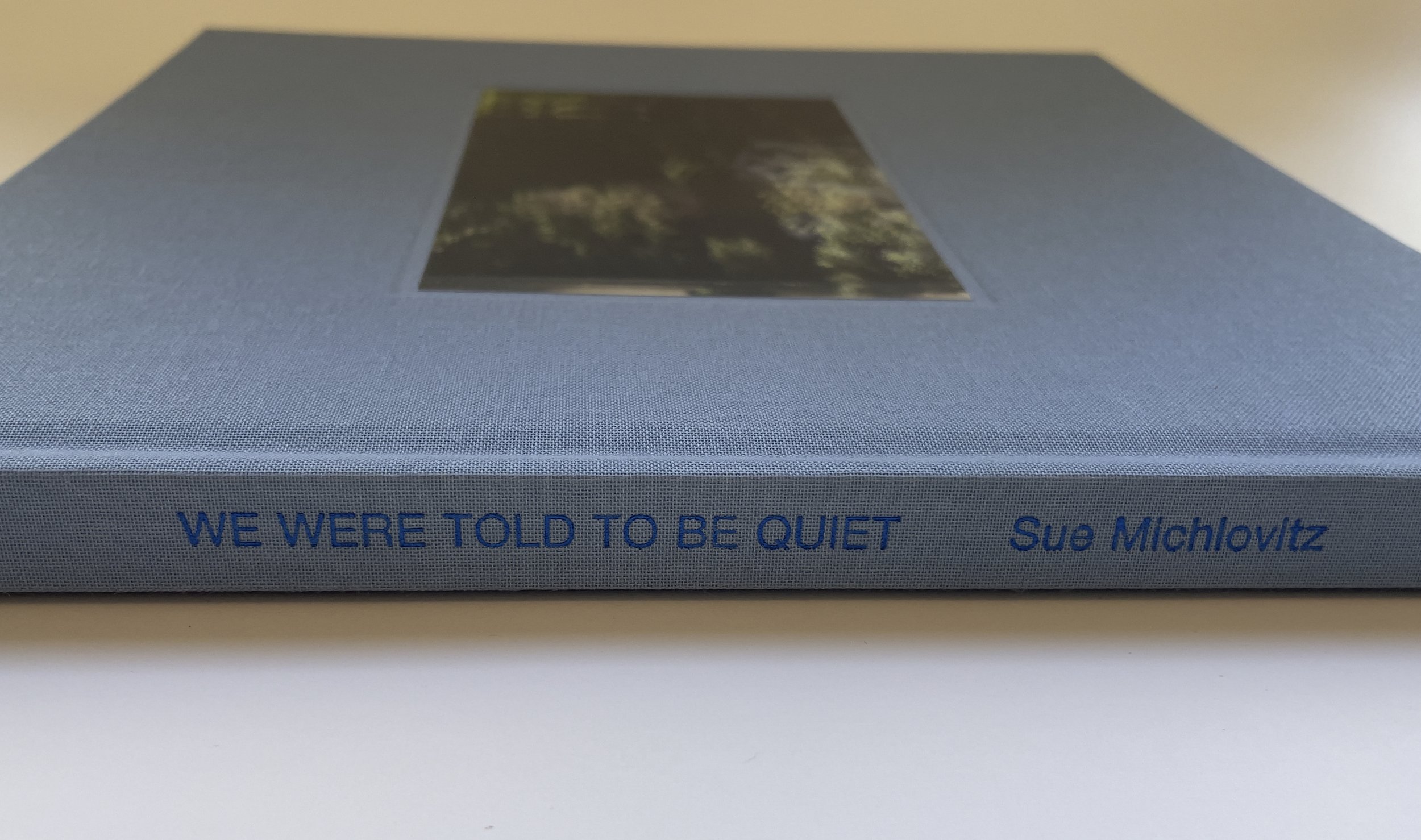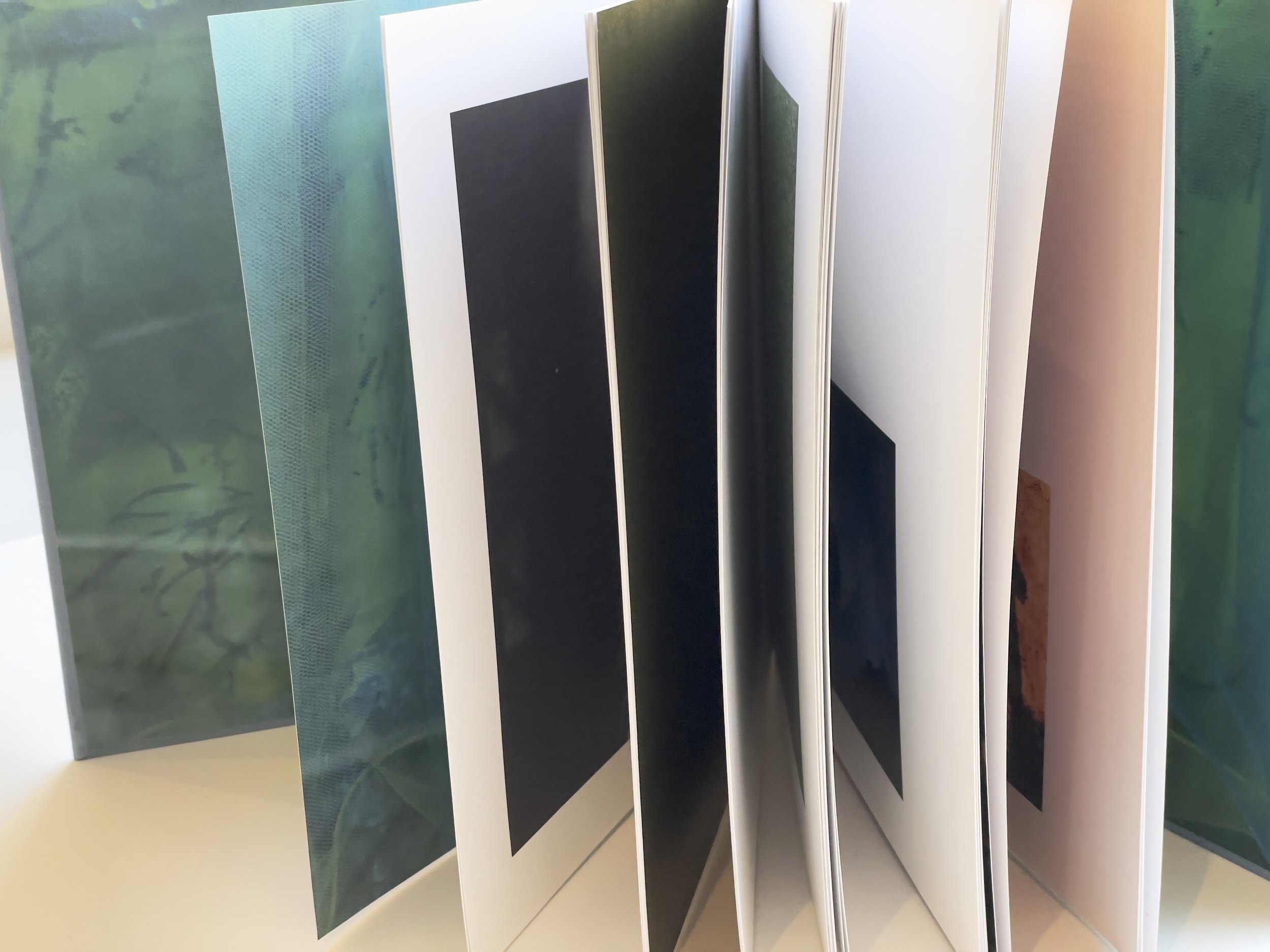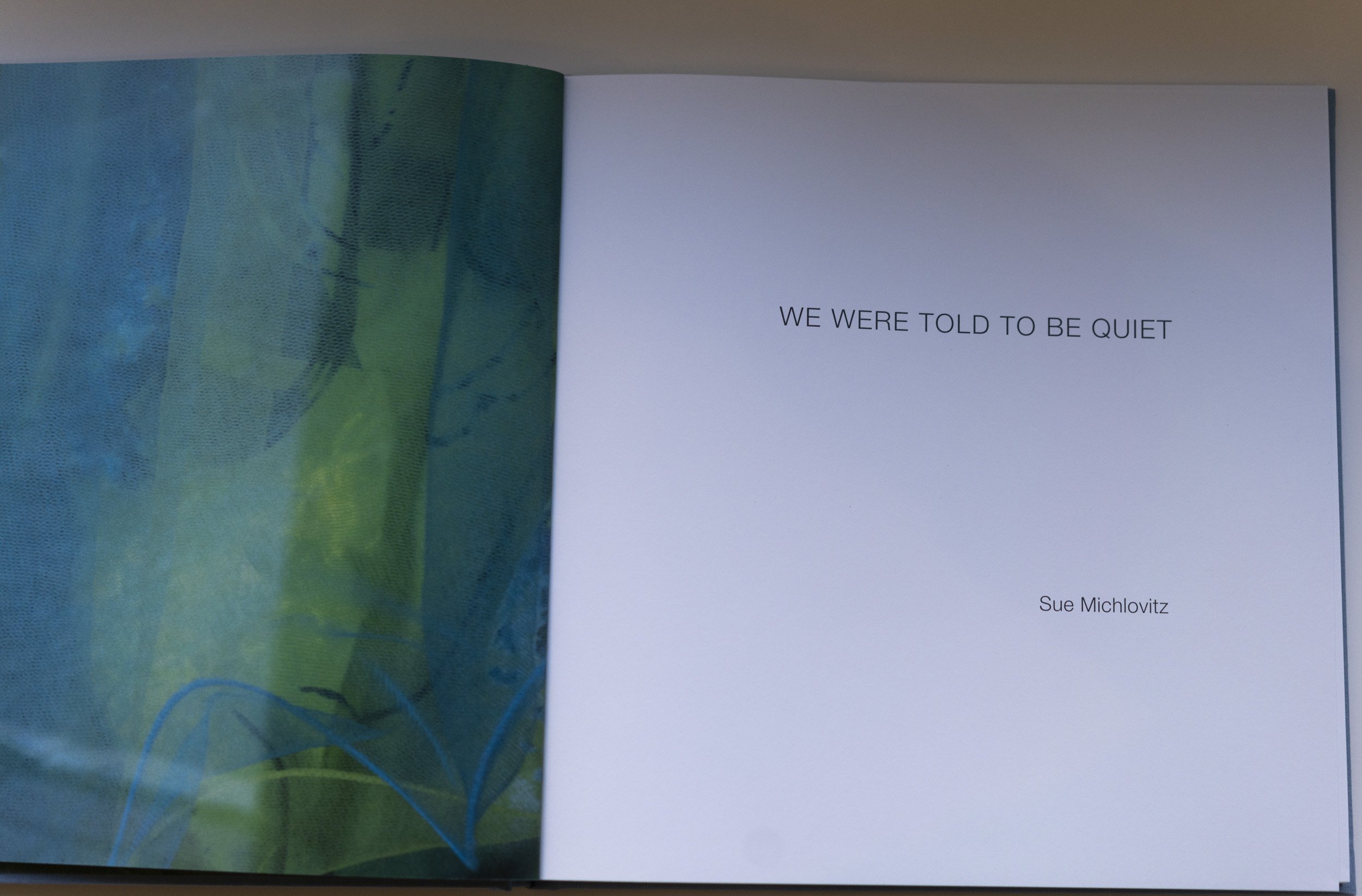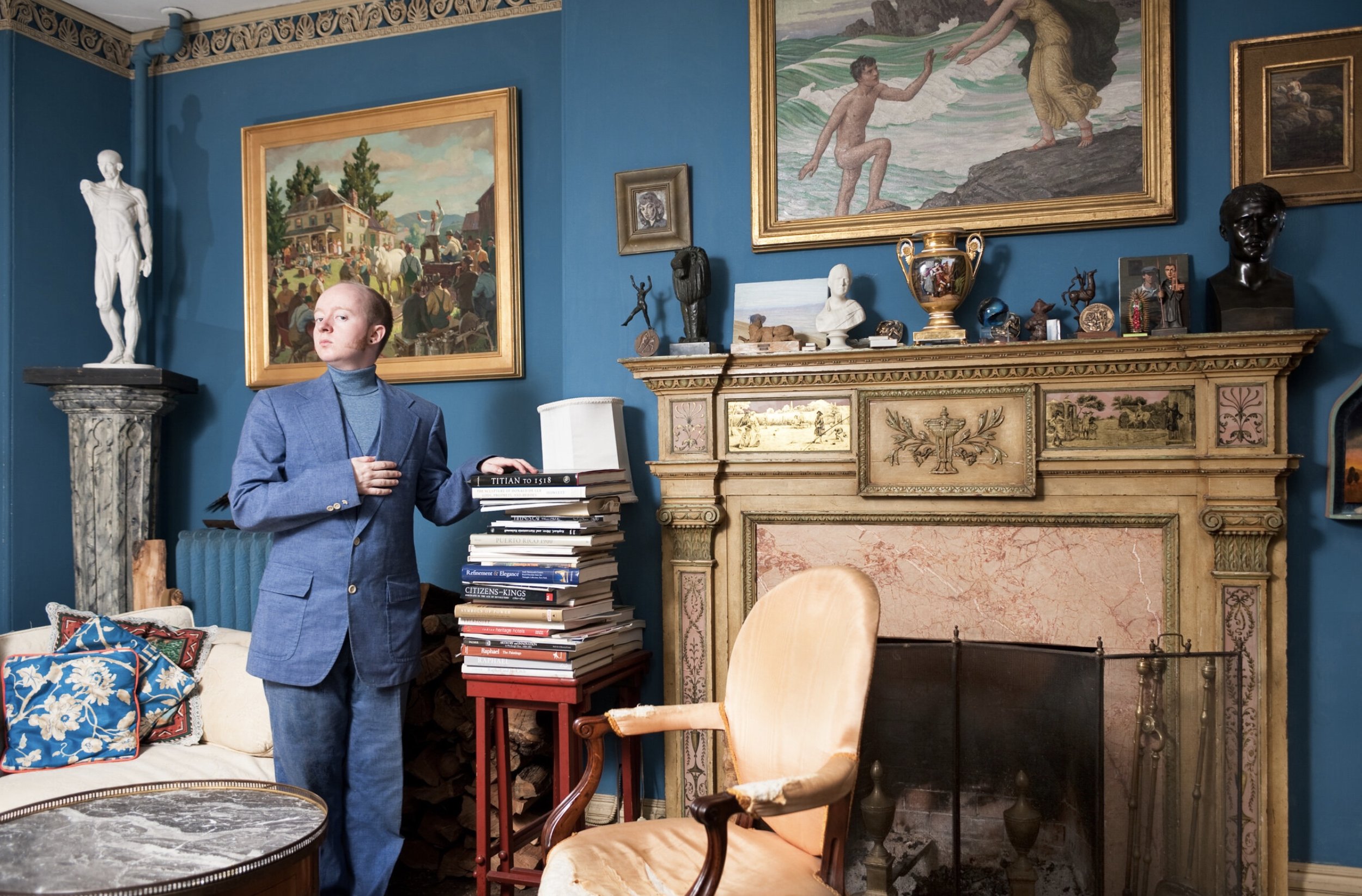Twelfth night: gorgeous works and artist books
Our holiday exhibit features artist books, photo related crafts, prints, framed works by our stable artists, and unique secondary market finds. The work is interesting, heady and fun!
“I say there is no darkness but ignorance.”
― William Shakespeare, Twelfth Night
Artist Talk: Saturday, January 14, 5-8pm
December 9 - January 31, 2023
Lynn Karlin
Lynn Karlin, Spatula and Whisks, 2015, Dye Sublimation on aluminum, 36 x 36 inches, $4,500.
Lynn Karlin, Spatulas, Flatware#2 and Spoons and twine in tray, 2015-2016, Archival pigment prints, 15 x 15 inches, $600 each
My fascination with kitchenalia started as a child, first playing with the objects as toys and then cooking alongside my mother, especially at holidays, learning that each tool had a specific purpose. Through my adult years I’ve collected vintage flatware and cooking gadgets from yard sales and antique shops; my favorite being the three blade spatula from the 30’s and the clever Easy Flip spatula. Arranging these objects in a tray and photographing them from above using natural light in my studio led to The Tray Series which challenges me to create within a confined space accentuating their form, texture and design. -LK
Caroline savage
Caroline Savage, The Sky is Dreaming and On the Road, 2019, 1/10, Cyanotype on paper, 12 x 12 inches, $300 each
My interest is in the tension between recognizable and altered space. Images are captured, claimed, reworked and presented to create a world of mystery and wonder that collides with actuality and perception.
— Caroline Savage
Fran Vita Taylor
Fran Vita Taylor, Earth’s Tones and Textures, 2014, Inkjet print, 36 x 28.5 inches, $2,200.
My work has evolved over time, but I have long found my photographic home in assemblages. I collect or make objects, assemble them, and photograph them. The subject matter, tone, and theme of these assemblages change over time, but one thing is often true: they address the texture and shape of both organic and organic-seeming objects, which speaks of the beauty of the world around us and the passage of time.
— Fran Vita-Taylor
Barbara goodbody
Barbara Goodbody, From the Shared Memories portfolio, 2/5 and 5/5, 2012, Inkjet prints, 19.5 x 14 and 14 x 19.5 inches, $1,800. each
The Roman ruins were photographed on a 2012 trip to Morocco. Returning to Maine Barbara digitally collaged the images with still-life photographs of Queen Anne’s lace and straw flowers she made in Tenants Harbor, Maine.
Peter Schrager
Peter Schrager, Detail from his book, Pleasure Yourself, 2022, Offset printed book, 8.5 x 9.5 inches, $45.
Through the gift of Photography it is my purpose to share what others might have overlooked: the mundane; the ordinary; the everyday. Pleasure Yourself is a Zen Meditation on the streets of Los Angeles.
—Peter Schrager
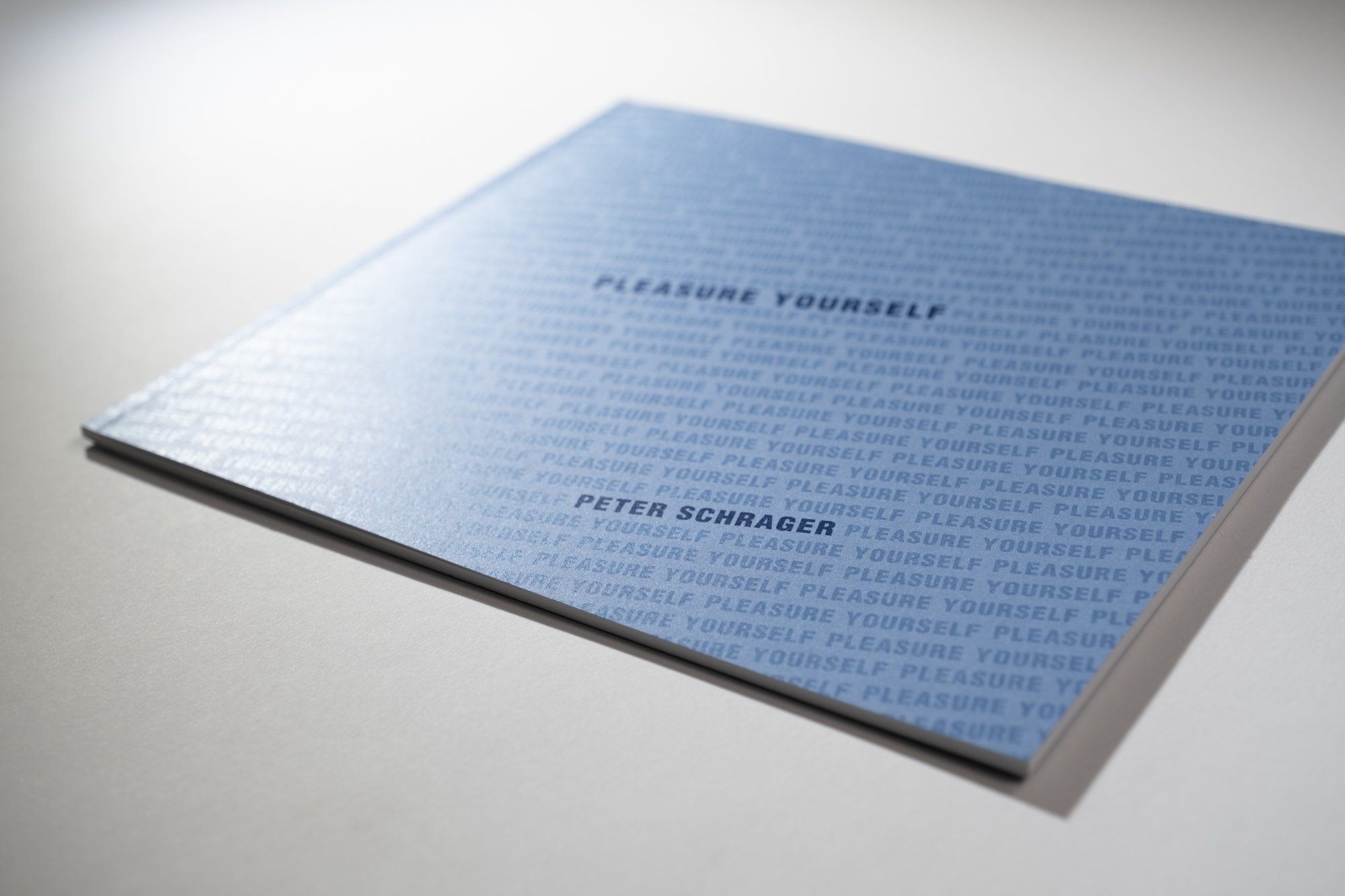
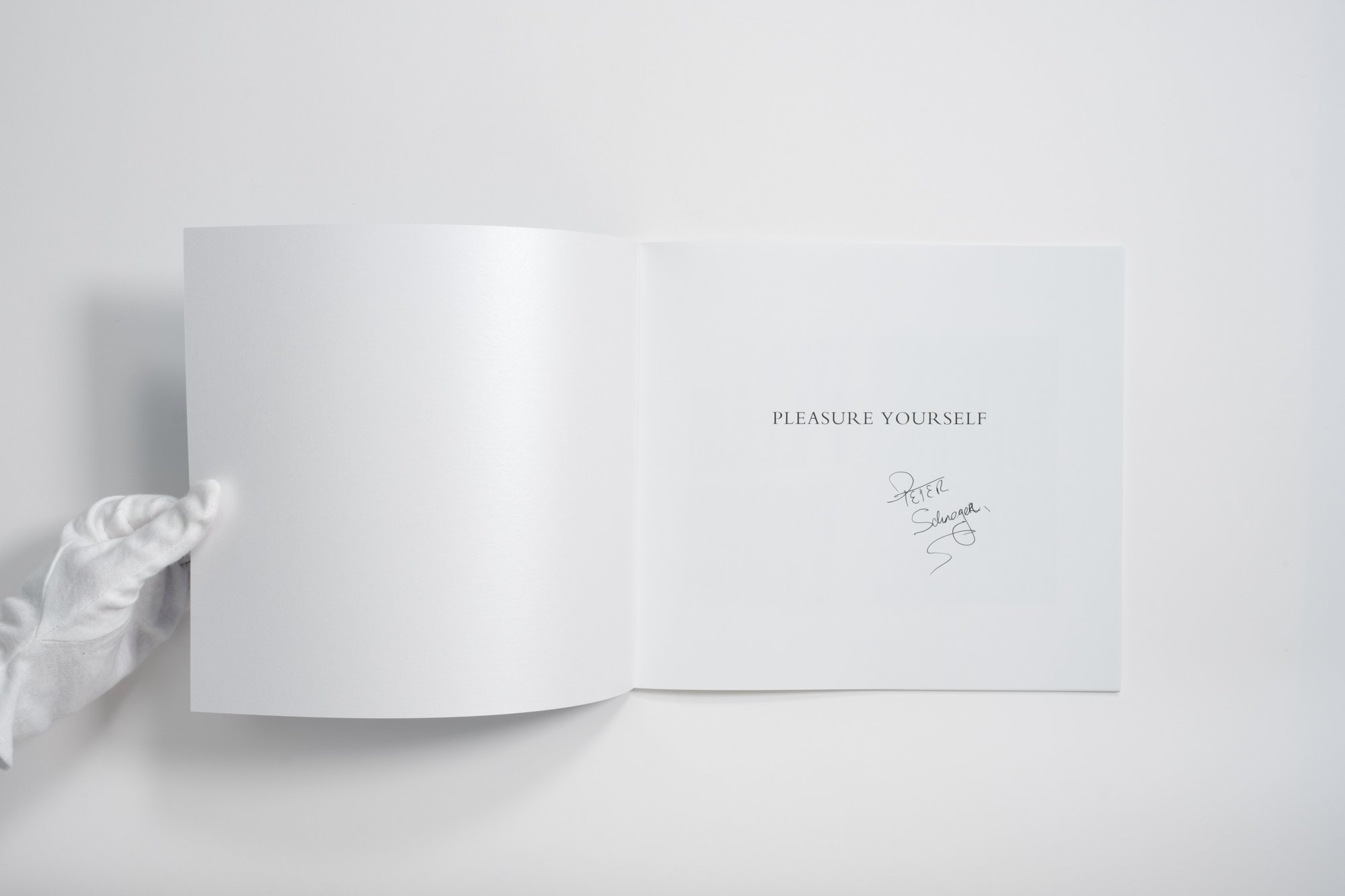

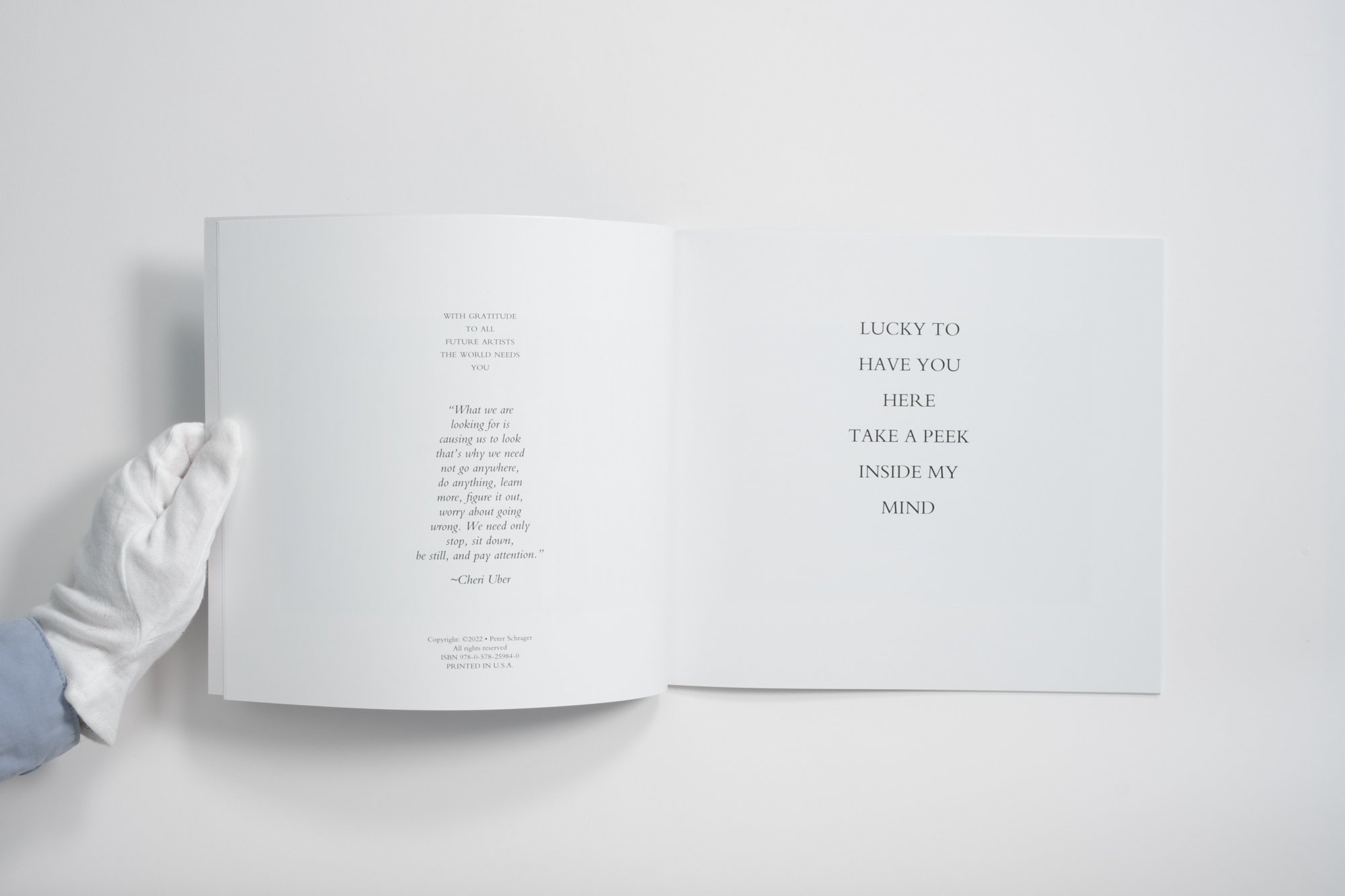
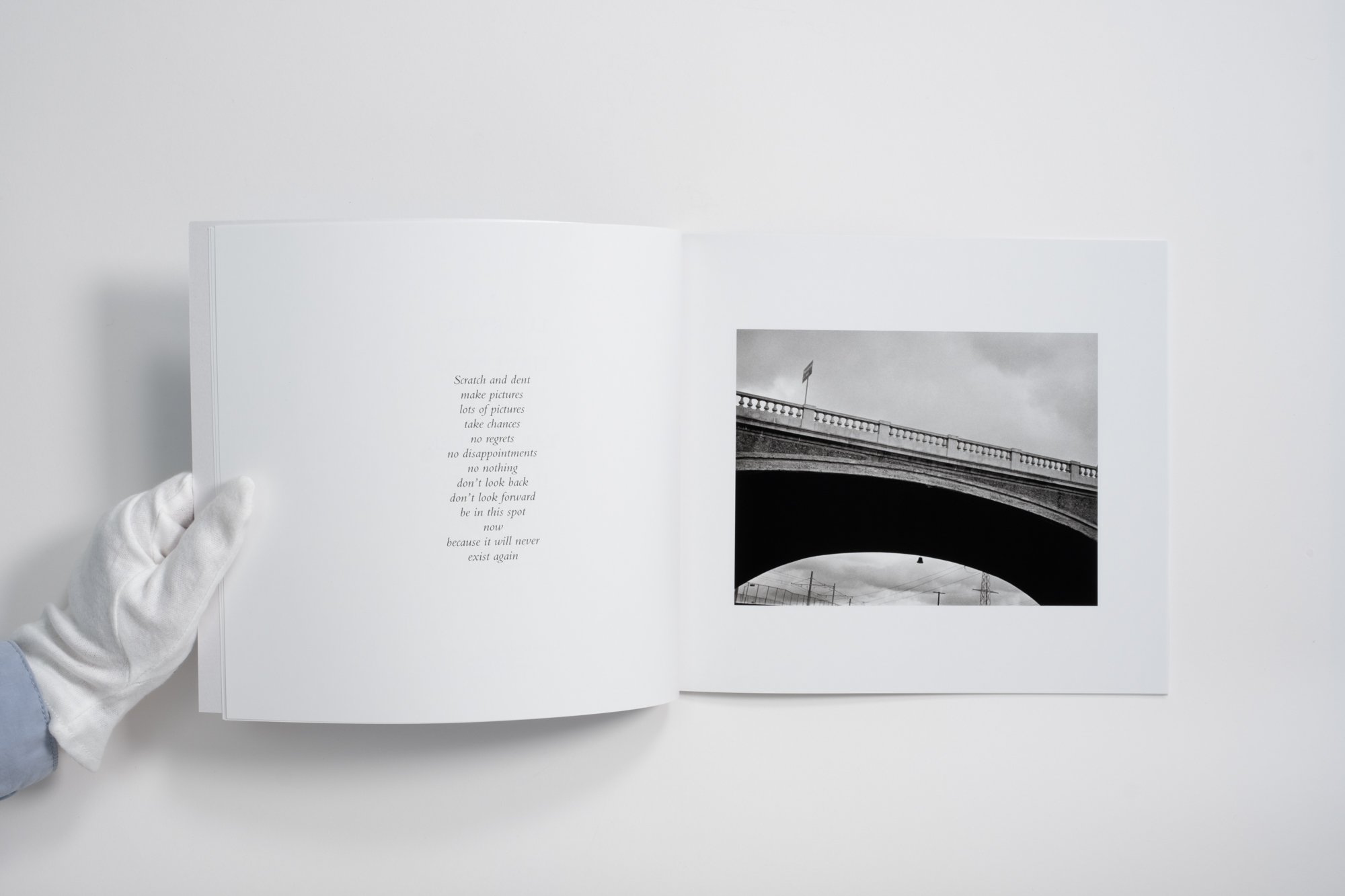
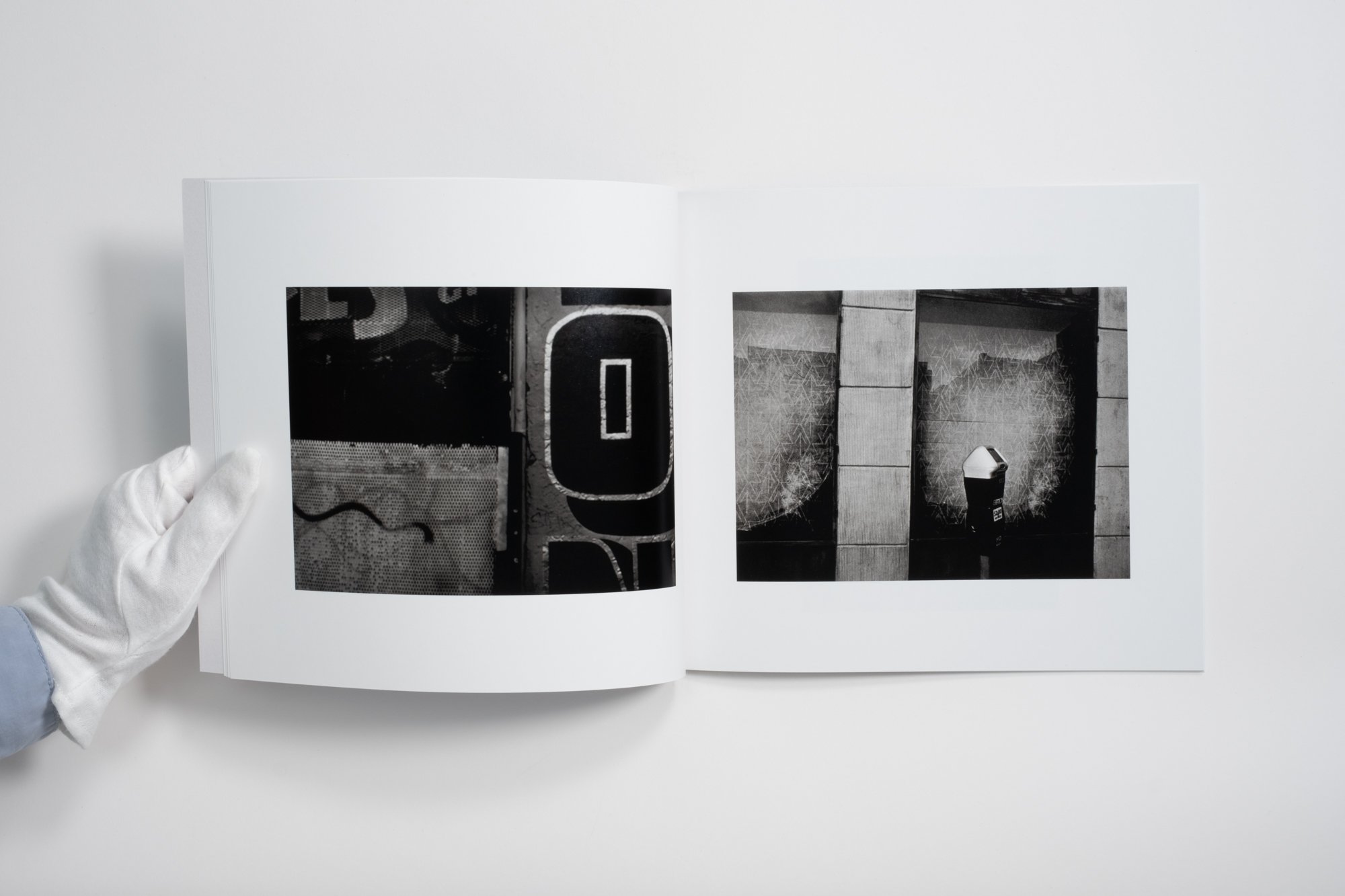
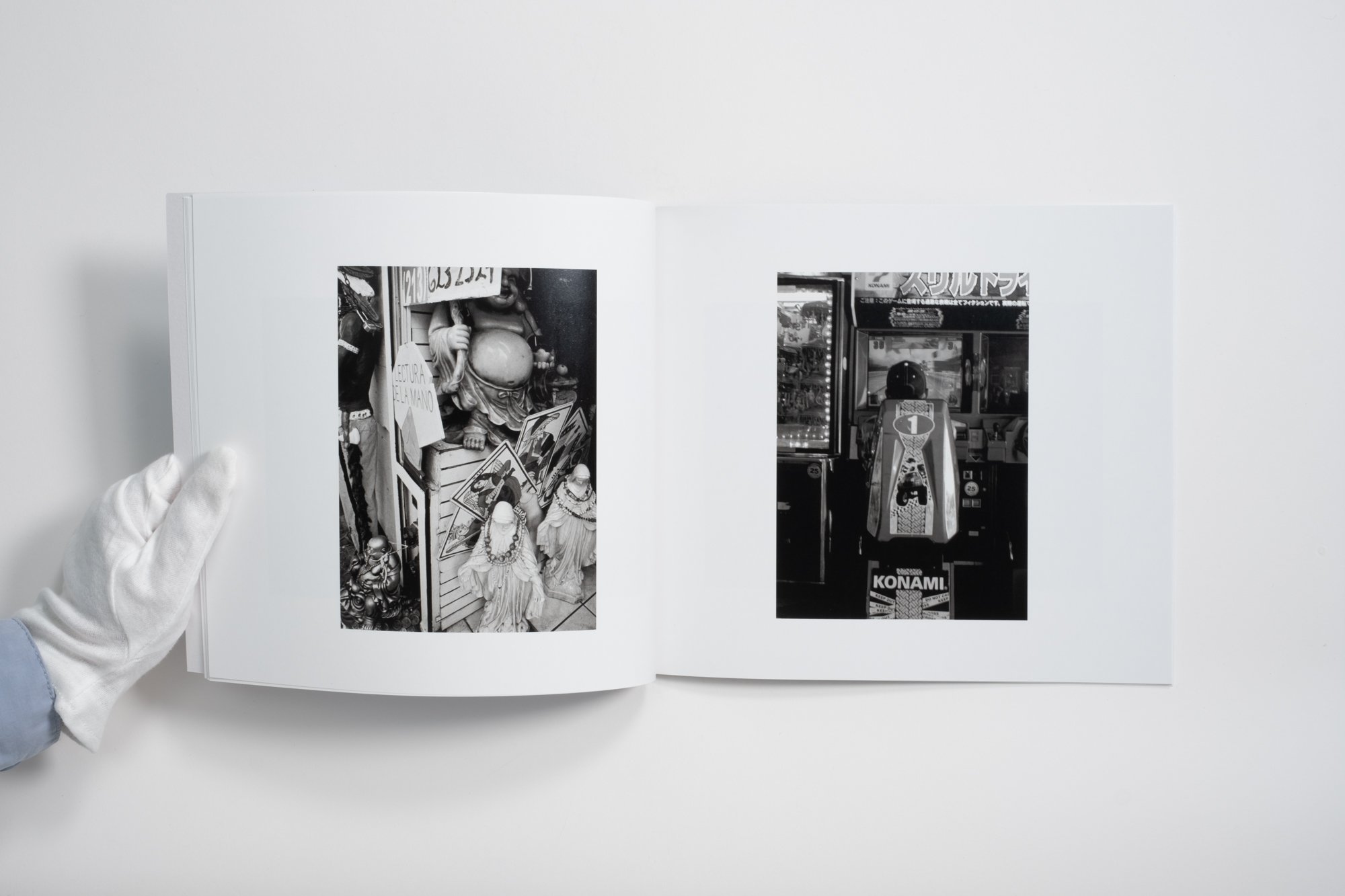
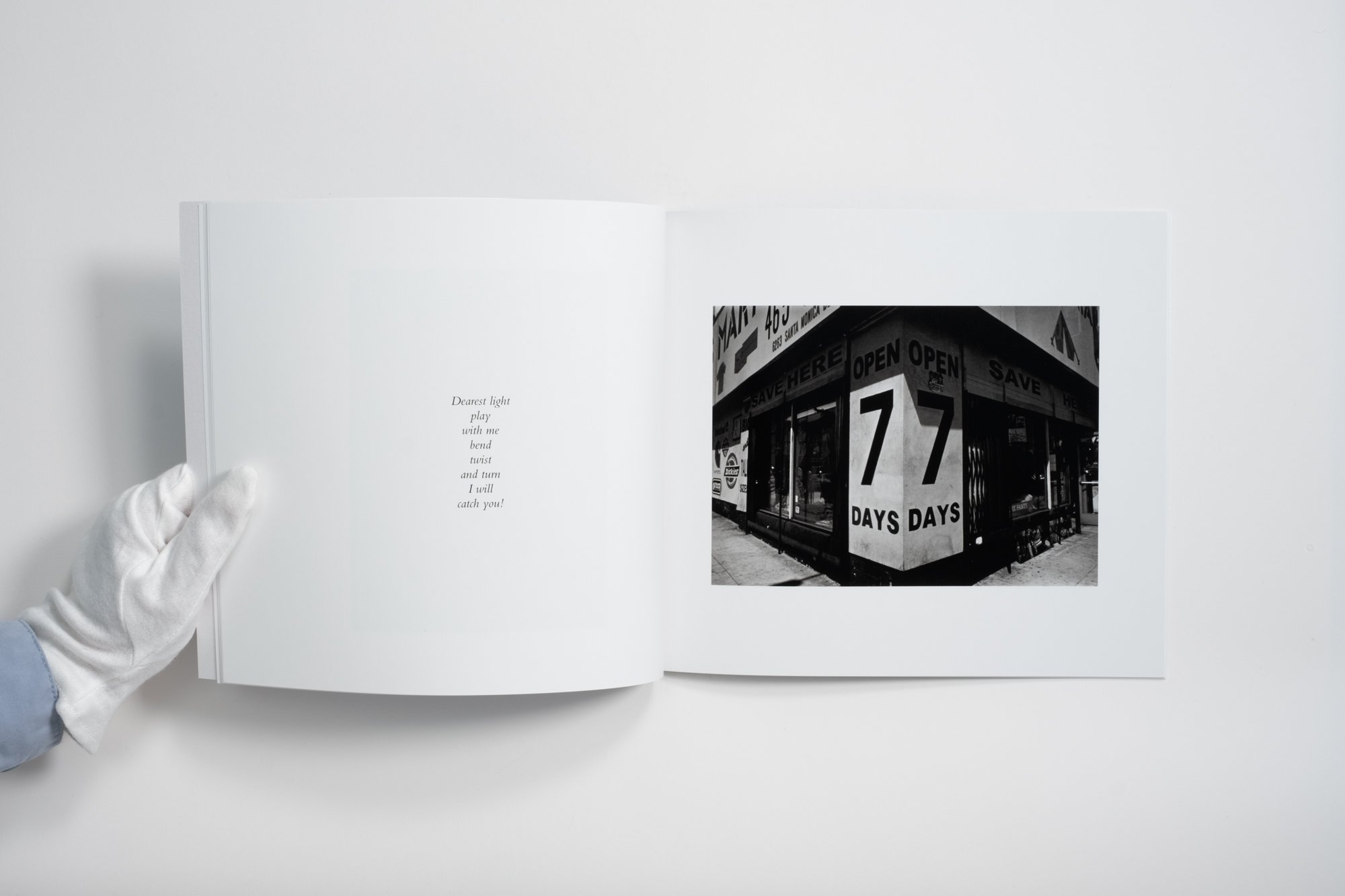
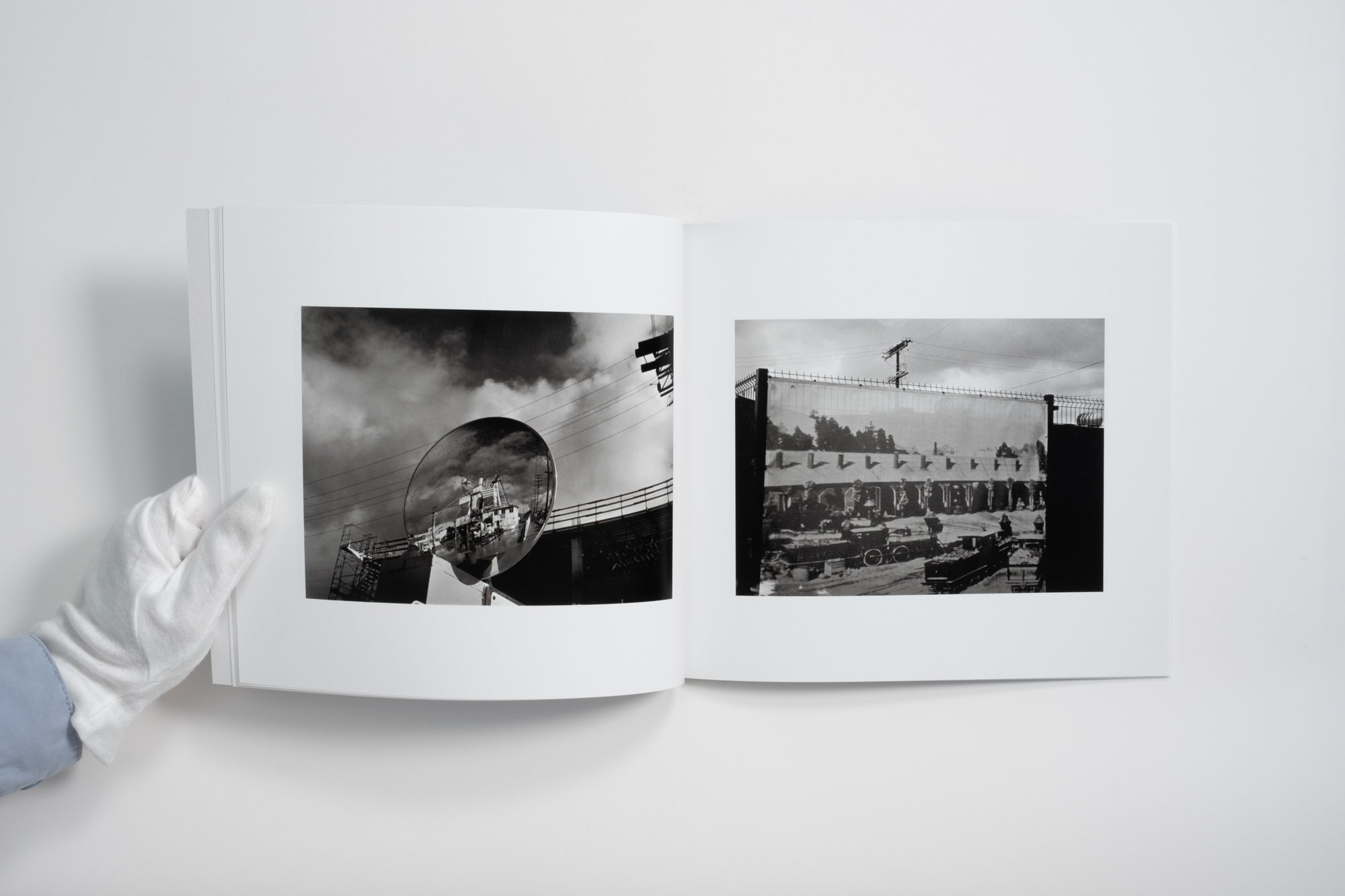
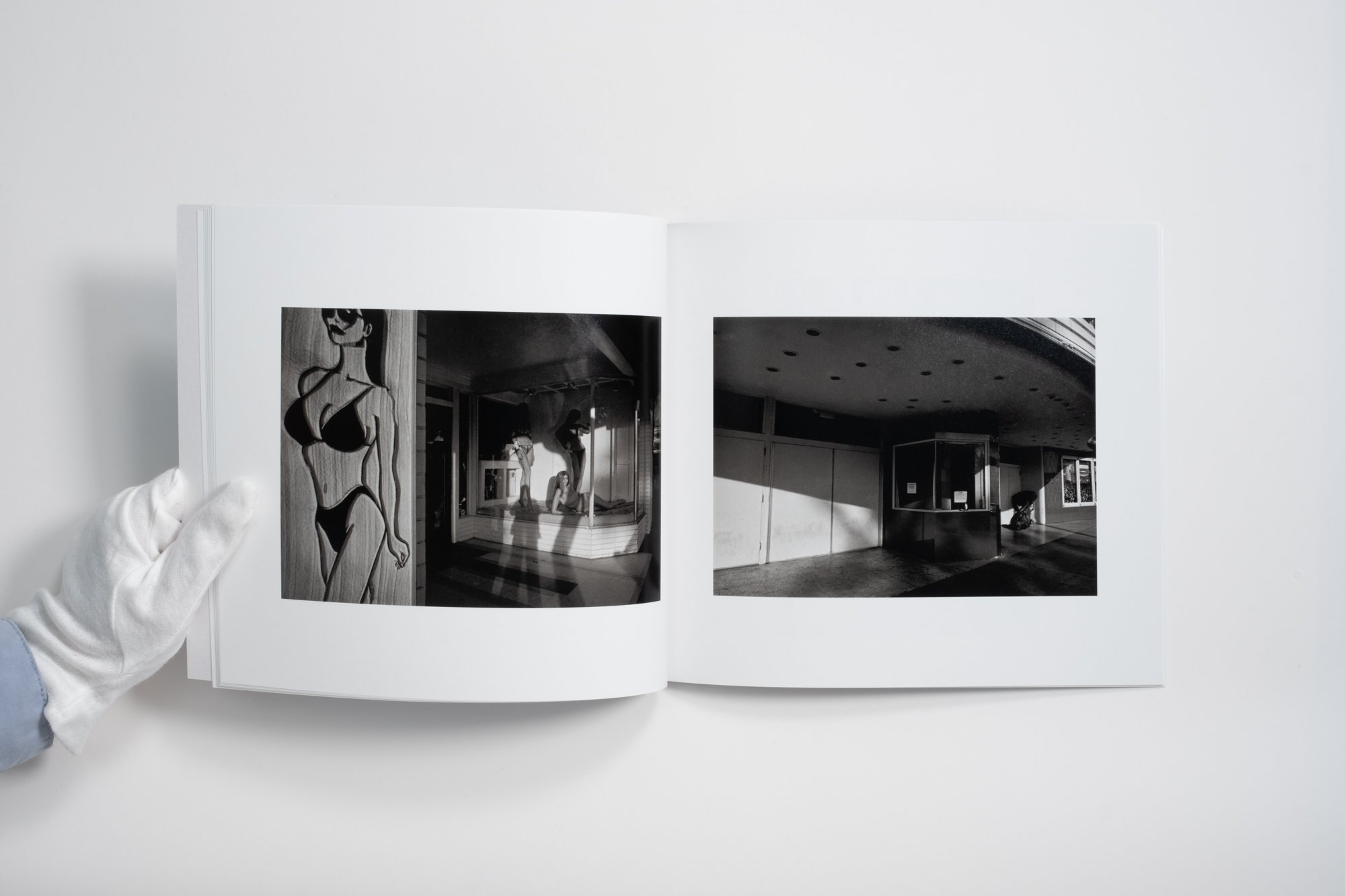
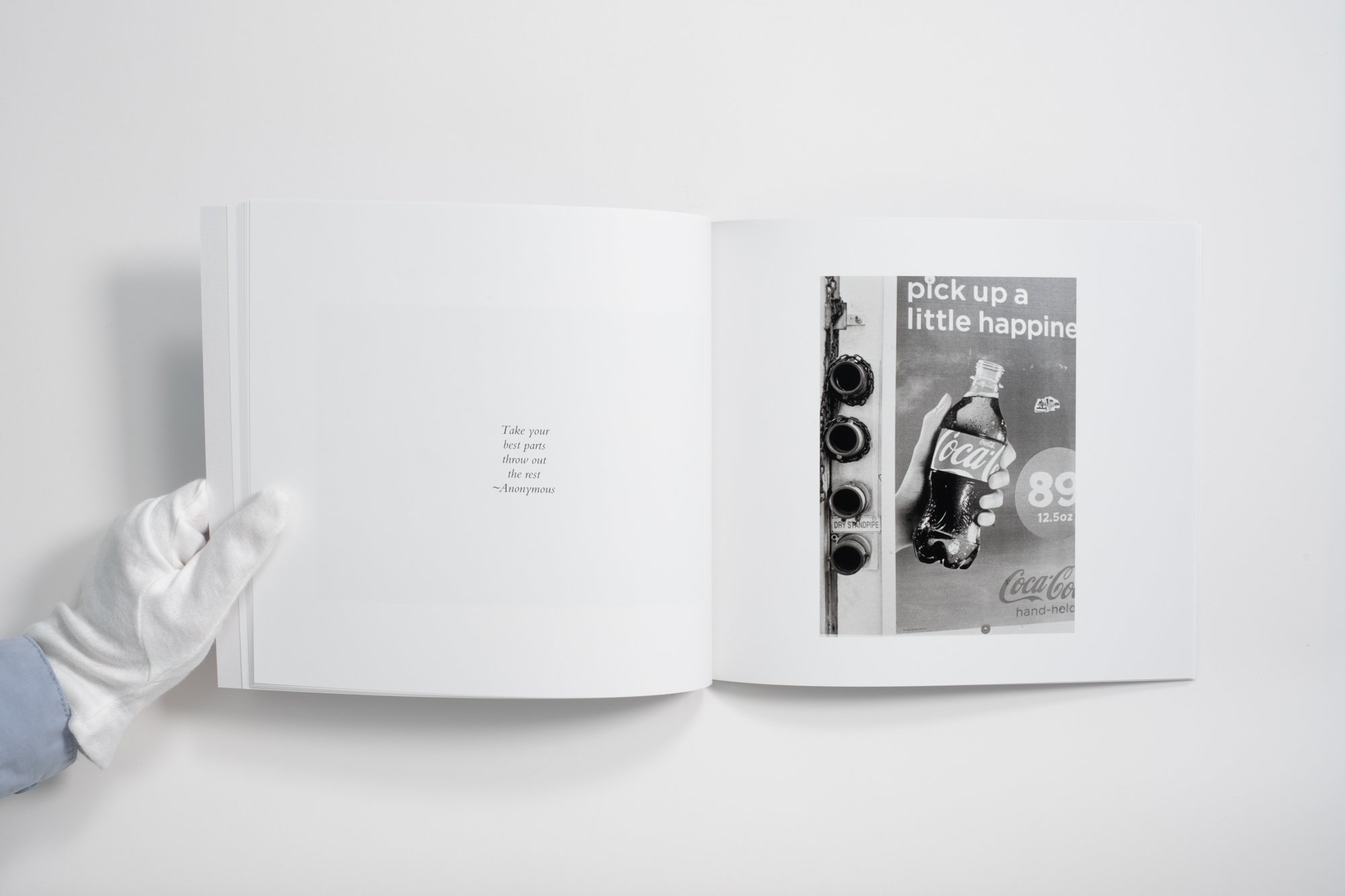
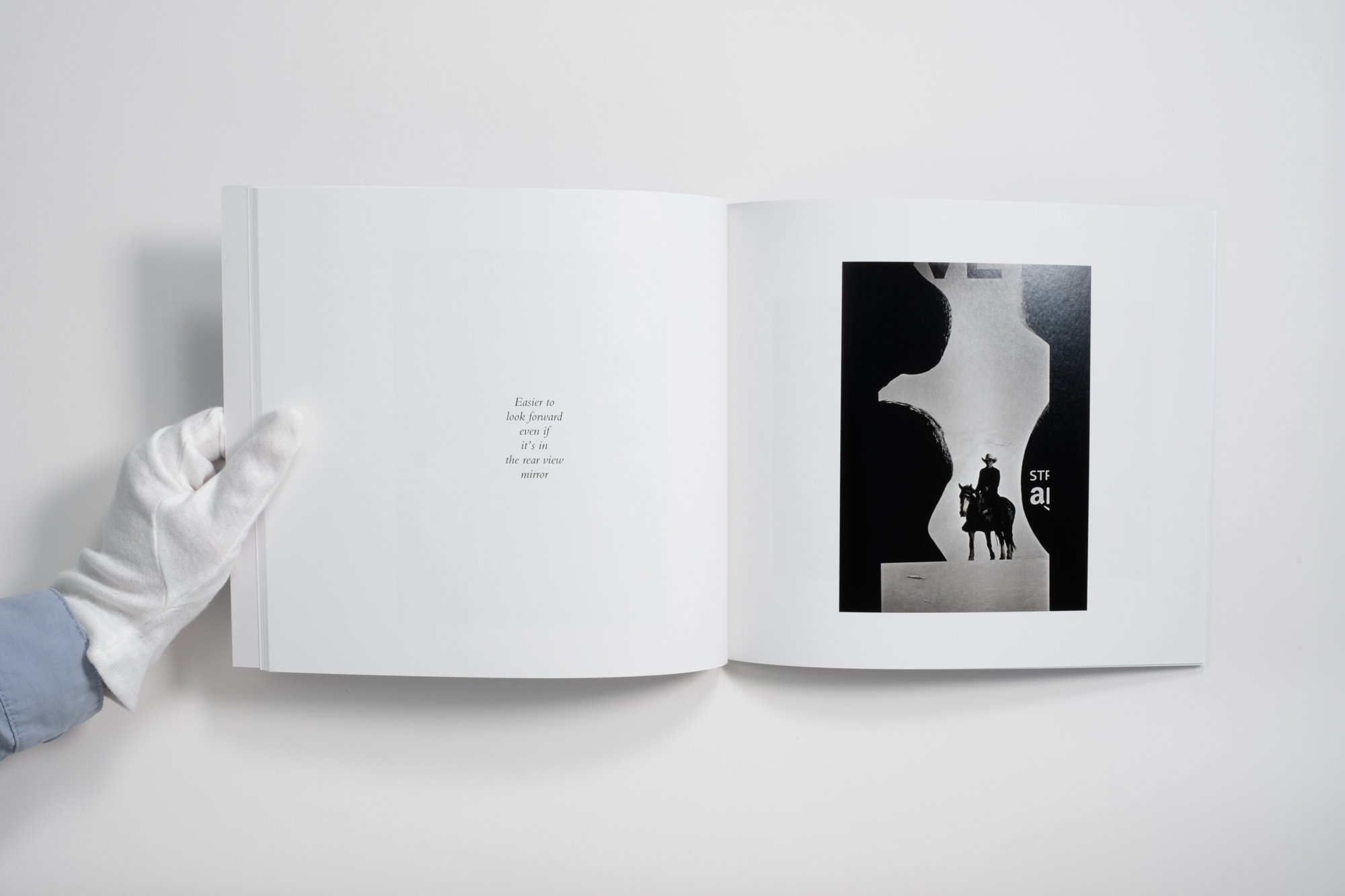
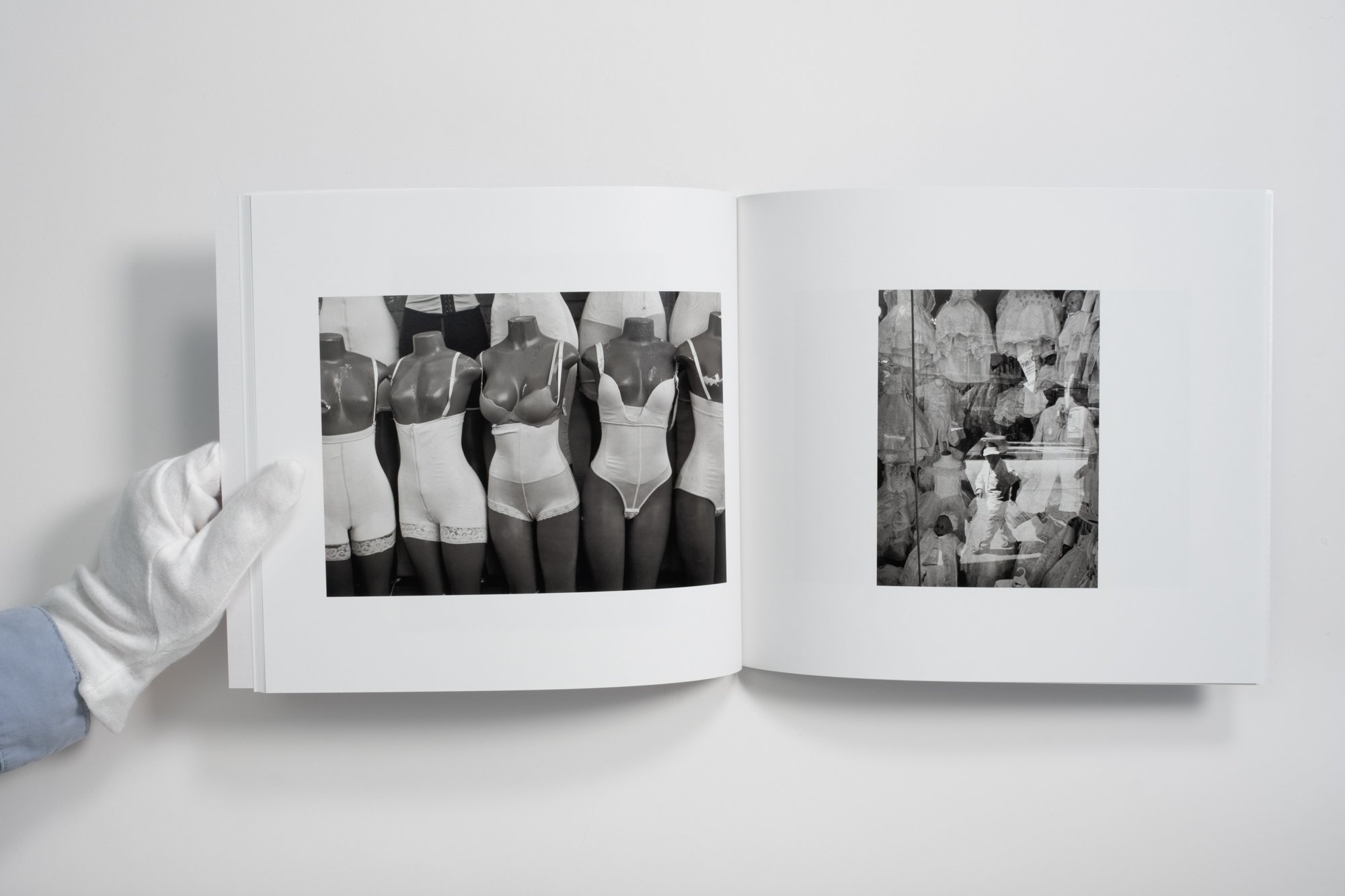
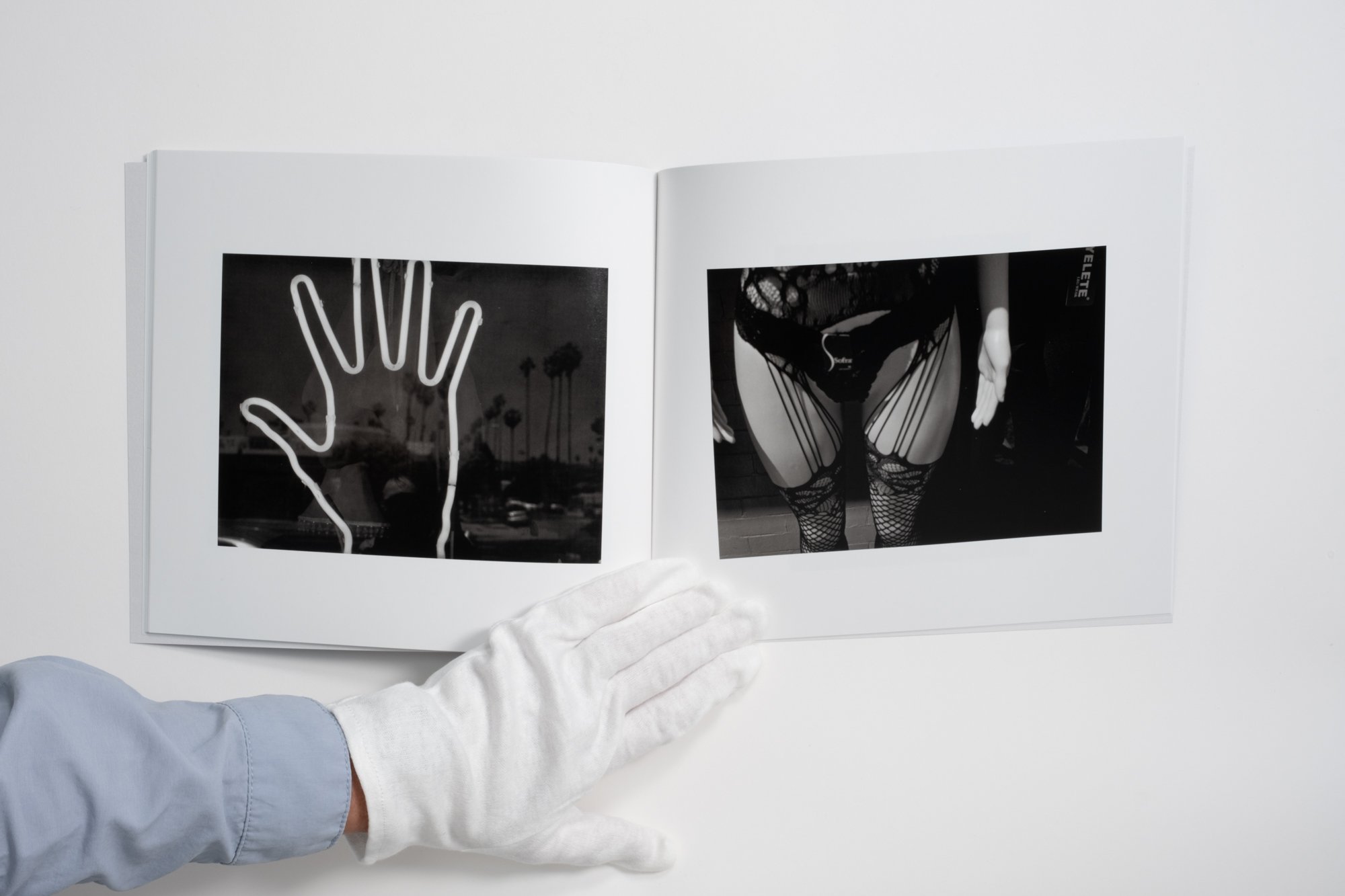
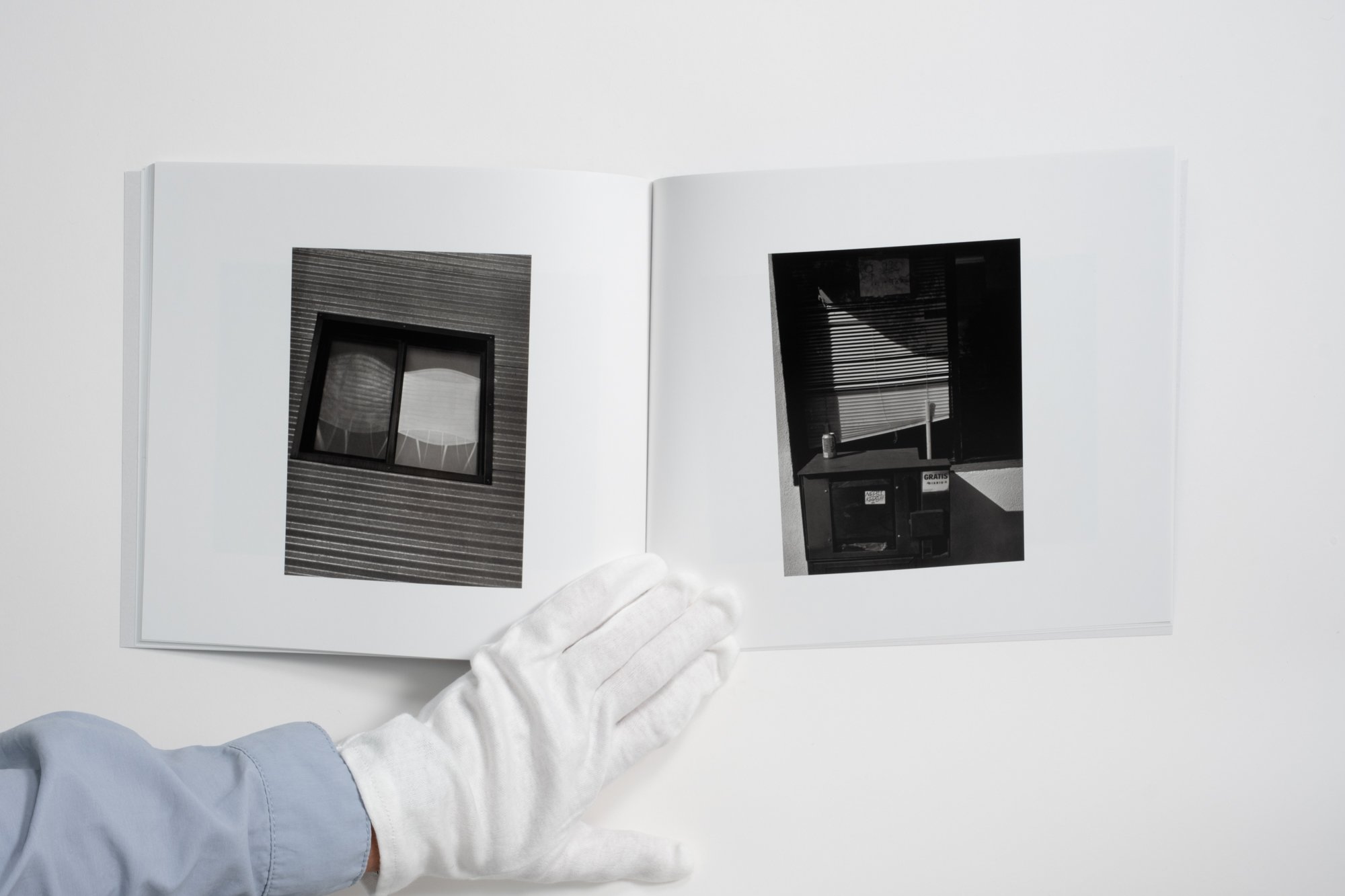
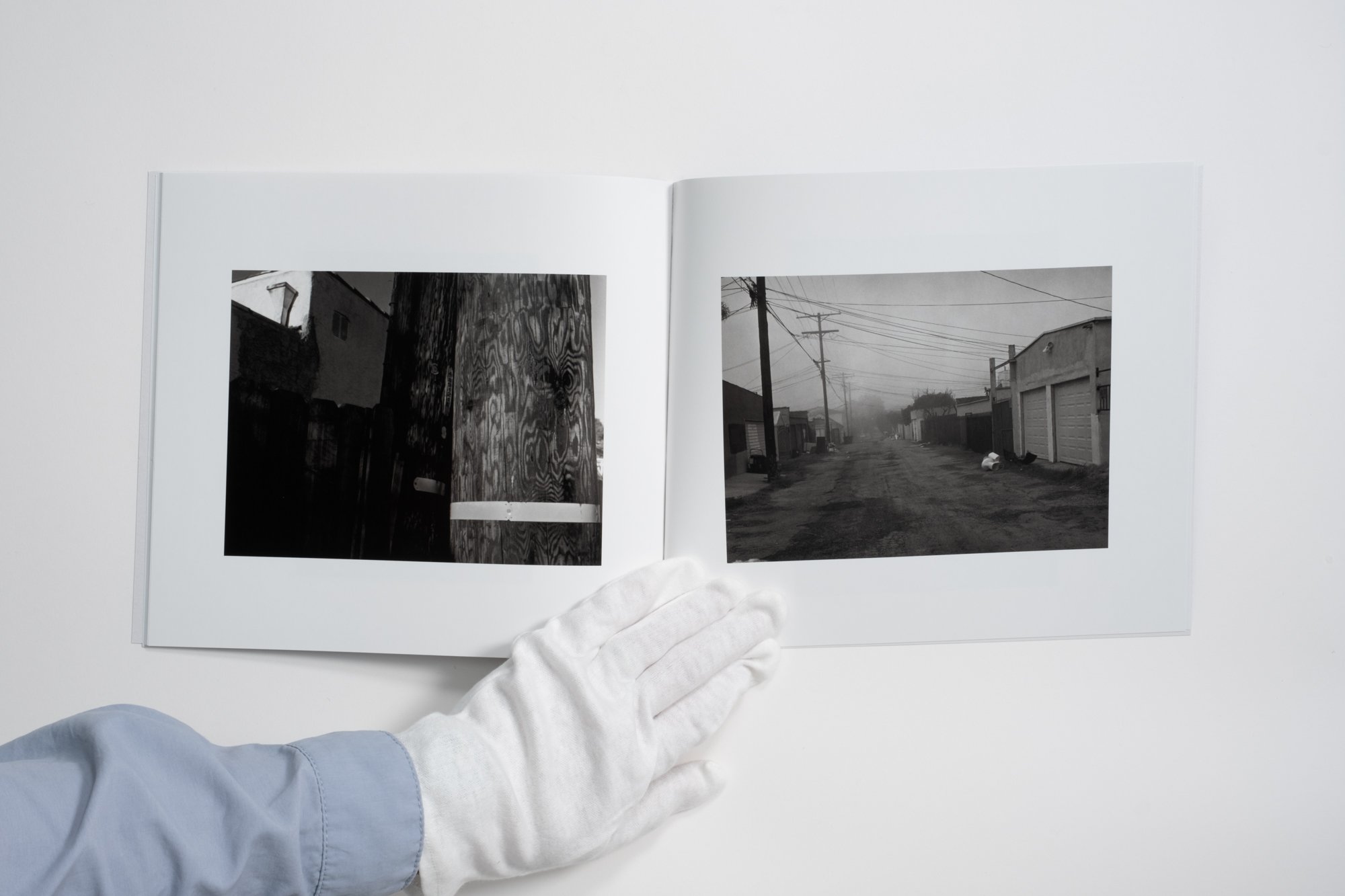

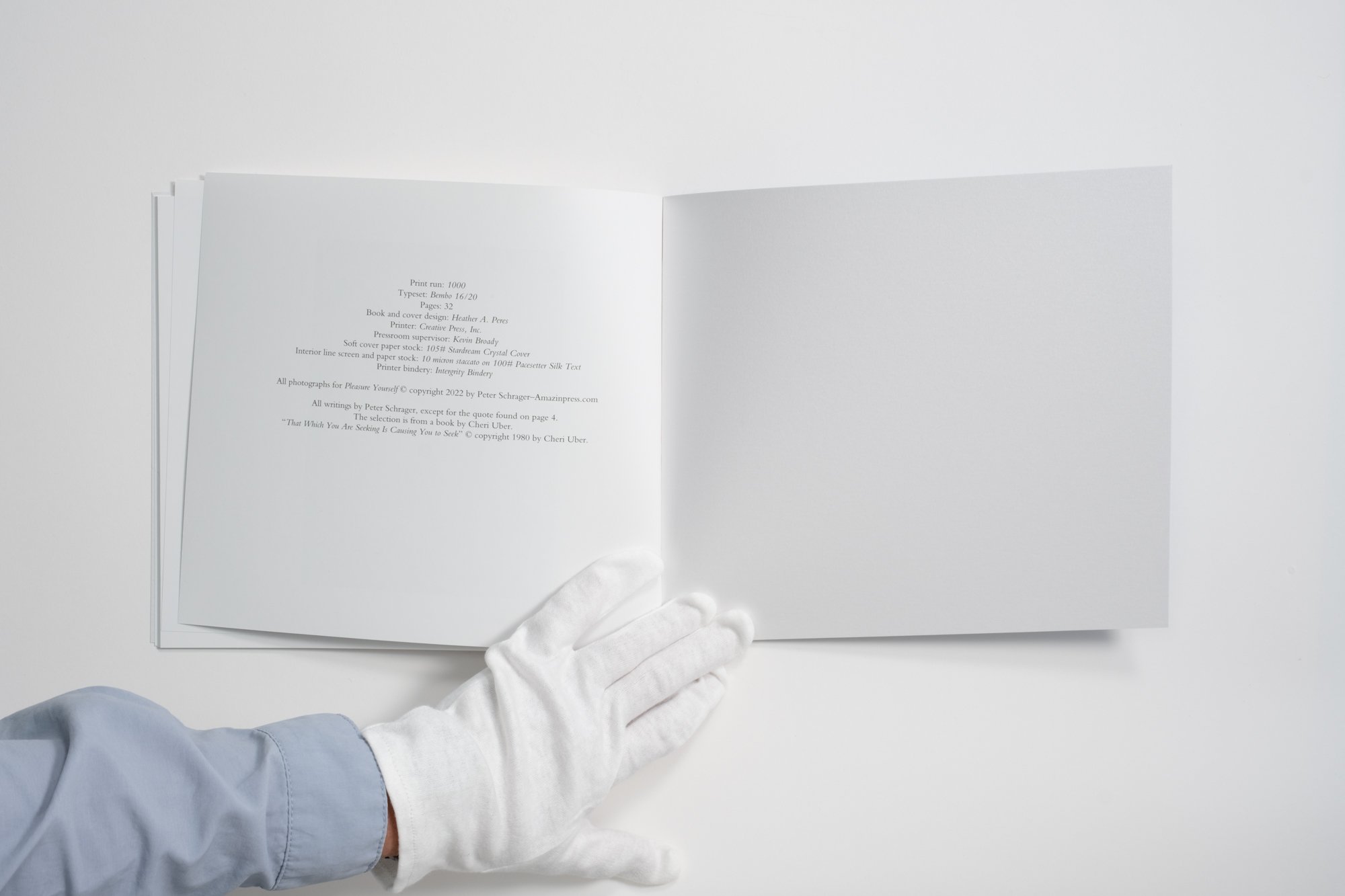
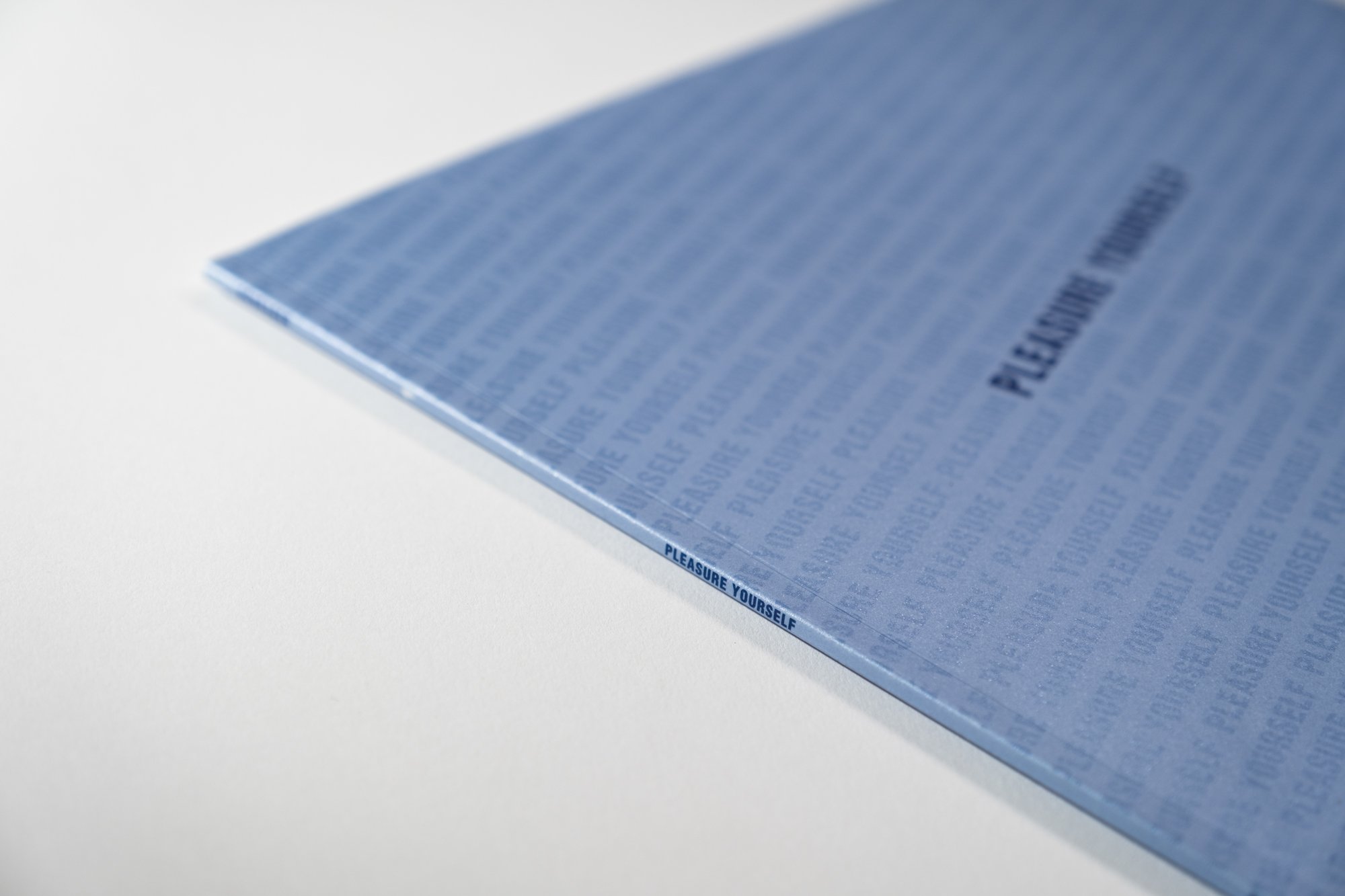
W. Eric Brown
W. Eric Brown, Three pieces from the Unorganized Territories (Rockwood Strip), 2020, Unique Inkjet prints with watercolor, 15 x 11 inches, $2,500. each
Familiar structures and memory are the driving subject matter behind my work. I am interested in the tension created between what is real and imagined. This can be of a place or memory. Sometimes it is hard to differentiate what I have imagined a place or memory to be and its actuality. I find solace in this state of being and I strive to convey this in the work I make in several media (photography, sculpture, paintings and books). I act intuitively and in response to elements of chance set forth in the processes I employ.
— W. Eric Brown
melonie bennett
Melonie Bennett, Barn Swing, Hawaiian Luau at Uncle Dave’s Birthday, 2012, Silver prints, 13 x 19 inches, $1,850.
Melonie Bennett, Refreshing Rain, Hawaiian Luau at Uncle Dave’s Birthday Party and Summer, Uncle Dave’s House, 2012, Silver print, 13 x 19 inches, $1,850 each
These photographs are part of an ongoing visual diary of my family and friends and the times we have shared with each other. Photography helps me process family dynamics. I am always trying to see the silver lining. This is a challenge that I look forward to and it always seems to yield moments that surprise me and that I want to remember.
— Melonie Bennett
jack montgomery
Maine is truly a “museum of streets”. We are surrounded by beautiful and fascinating structures. To my eye, they are sculptures, waiting to be admired as such. Form, color, texture, history…. there are an infinite number of variables that make each unique and intriguing. Some of the most interesting to me are among the most humble.
—Jack Montgomery
Sue Michlovitz
Sue Michlovitz, Aqua Muse, 2021, Accordion book, 8 x 6 inches, $700.
I look through the lens of my camera as a painter may see with a brush. It is my tool to express what I visualize. My images often blend the natural world with layered reflections, often intend intending to bring the unnoticed into view. I use abstraction with a tendency for intentional obscuration, but have recognizable features of an internal search for connection. With transparency, translucency and reflection, I strive to portray mystery and magical beauty in an environment. - Sue Michlovitz
Sue Michlovitz, We were told to be quiet, 2021, 1/25, 10.25 x 10.25 inches, $125.
John Woodruff
John Woodruff, Culturelux #10, 2018, Edition 1/10, Photographic collage, 25 x 40 inches, $2000
My inventive and poetic compositions embrace color and form and explore the illusion of depth resulting in visually charged, immersive photographs that challenge the viewers perception of
what a photograph should be. They linger at the intersection of painting and photography, imagery and abstraction.
– John Woodruff
DM witman
DM Witman, Nebulae XX, 2012, Archival toned fiber silver gelatin prints made with slugs, mounted to anodized aluminum, 2 panels, each panel 13.75 x 11.75 inches, $700.
With Supercluster Arion and Other Phenomena I continue to explore my themes of obsession – ephemerality, biology, synergy, and finding a way to make the intangible tangible. Over the course of two years, I worked with common slugs directly on silver gelatin photographic paper. The process involved nightly slug hunting trips into the woods, followed by late night darkroom sessions. (No slugs were harmed in the making of the images). Each image is unique and cannot be recreated- each a singular object, and yet part of the collective, across time. Each image is unique mounted to anodized aluminum.
– DM Witman
jan pieter van voorst van beest
The two pieces, (Lunaria and Poppy) are photographs from the natural world in the fall season of the year. The plants were dead, dried out, beautiful and great in design! Look at the intricacy of the Poppy seed pod, I would challenge any modern architect to come up with a more stunning design. But both dead plants also represent a stage of life... actually the end! But then they carry seeds, which will, in the spring, regenerate new life.
– Jan Pieter van Voorst van Beest
CE Morse
CE Morse, Red Aqua Scarf, 2022, Habotai, 34 x 24 inches
I spend a lot of time in vintage auto salvage yards and boatyards where I discover incredible visual elements that inspire me the same way as do the great abstract painters. I hunt for this wild art, looking for patterns, color, texture & composition in subjects both man-made and natural; embellished by chance and patinated by nature, with an unspoken history of random events that can only be guessed or imagined. There is no reference to the identity or the scale of what I photograph. The abstract imagery coaxes a personal interpretation contingent upon the viewer’s imagination. These images are the inspiration for the silk scarves that I design; art to wear. Ironic, that rusted cars, damaged boat hulls, broken glass, dumpsters & the like would end up being high fashion; truly a case of making silk purses (scarves) out of “sow’s ears”.
— CE Morse
Claire Seidl
Claire Seidl, Clothesline Rosebush, and Curtain Horizontal, 2022, Selenium toned silver print on 20 x 16 inch fiber paper, Edition of 4, Unframed $1,900
I am an abstract painter and a photographer. My painter’s eye directs me in shooting, developing, and printing the photographs. Elements intrinsic to painting, like gestural line, multiple layered space, and ambiguous form and content, are all present. Some people see my photographs as abstractions, but they are deeply rooted in the real world; they are filled with specifics of place and people and natural phenomena - and their ephemeral nature.
My approach to realism is subsumed by the camera itself, which reveals what we can’t see - in the dark, for example - or what is lost when we shift our gaze. Many of my photographs are taken at night when our ability to see clearly is limited but the open gaze of the camera dispassionately records everything. All of my photographs suggest a human presence, with or without figures in them. At times, the images feel like a flash of memory, a moment held. I am very interested in how we see (or don’t see) what is right in front of us. The camera gathers more visual information, especially over time or in the dark, than our eyes can. It can hold multiple layers of space and reflections in focus while we can only perceive one at a time. My photographs show more than the unassisted eye can see. They are not manipulated in the darkroom.— Claire Seidl
Rose Marasco
Rose Marasco, Circles #3 and #4, 2001, Cibachrome print, 15 x 17 inches, $5000.
Rose Marasco, Circles #9, 11, 12, 13, 2002, Cibachrome print, 15 x 17 inches, $5000.
My Circle Series 2001-2002 (no.’s 1-15), completed my 10 year —Domestic Objects work. It seemed the perfect ending. This series also enlarged my use of projected imagery. I had experimented with projections a bit previously in both my Silhouette and Blueprints series; and expanded it in my Projections series. I have continued to use projected imagery in my practice throughout the past 20 years. With the Circles, I used sunlight as a light source & created or altered shapes that would fall onto my arrangement of objects. I continue to use all kinds of projectors (analogue & digital) to make my photographs.
— Rose Marasco
nick gervin
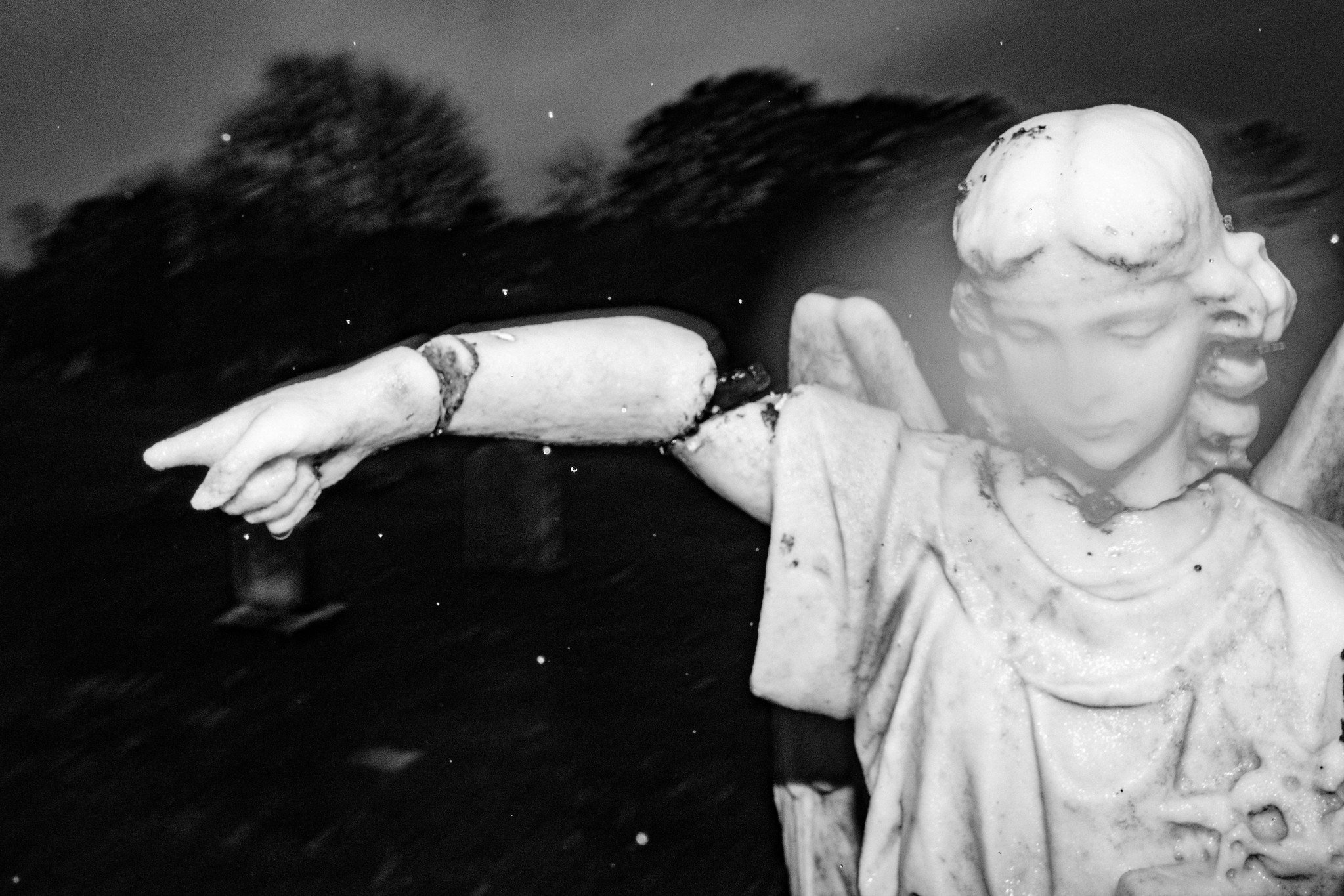

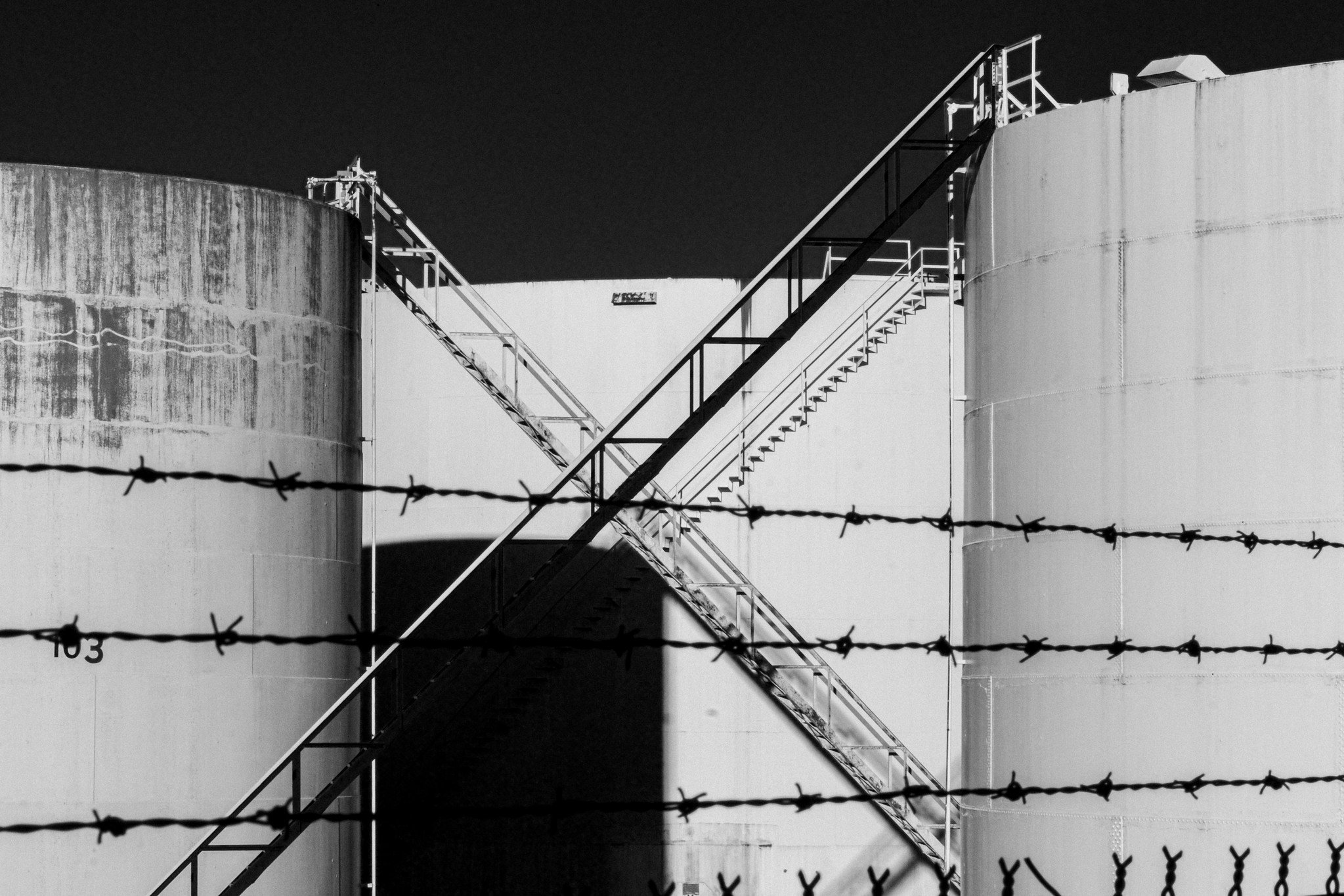
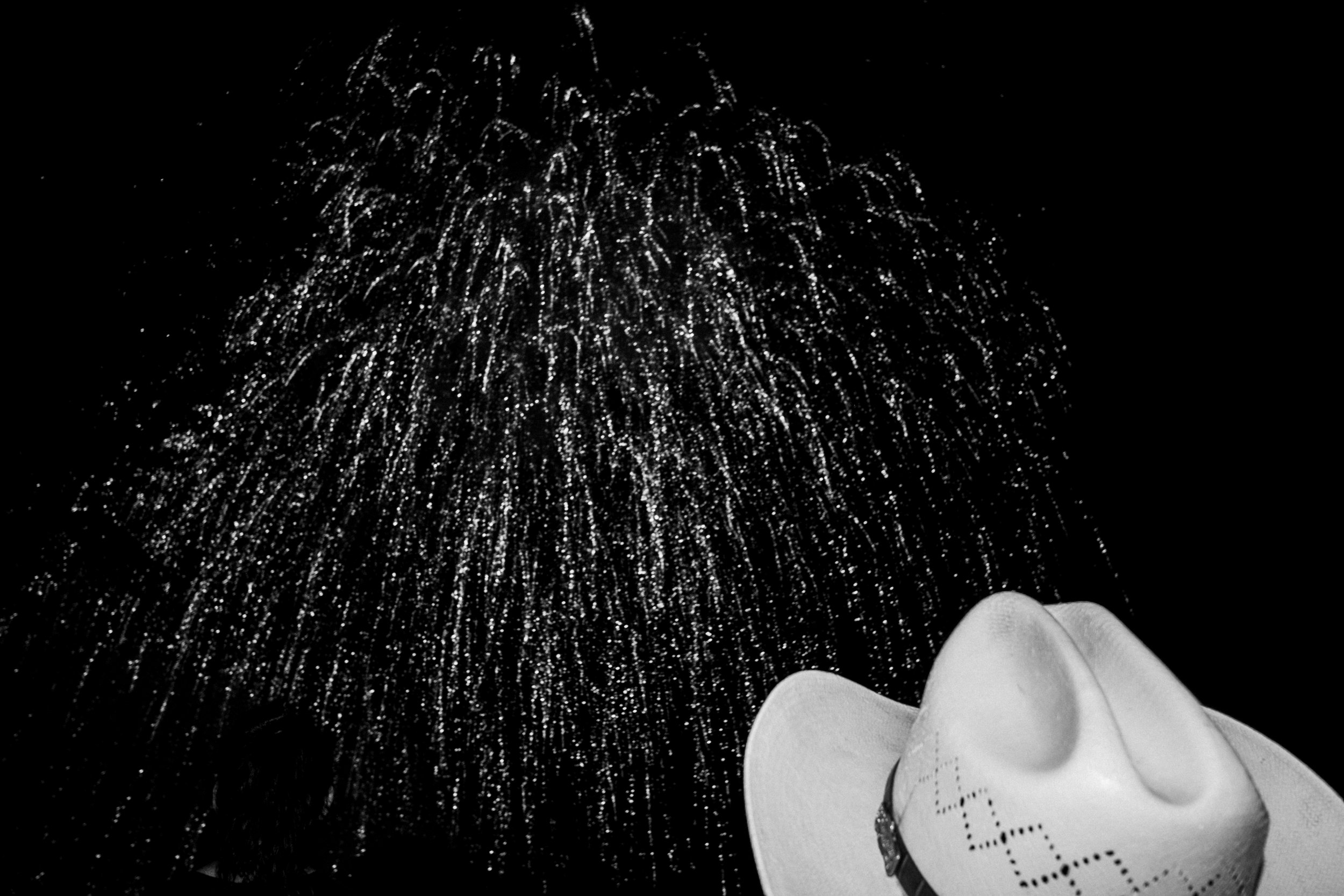
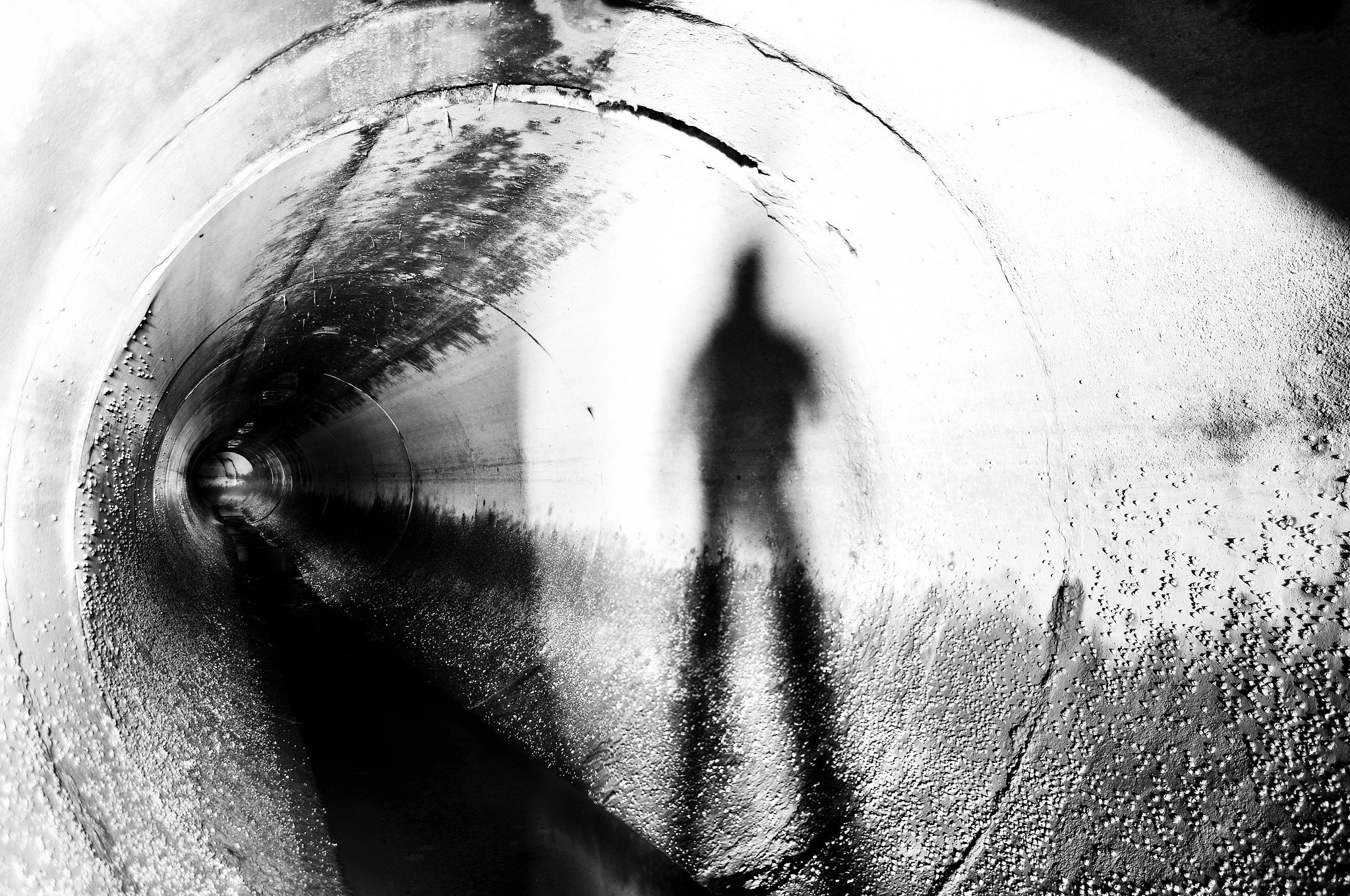
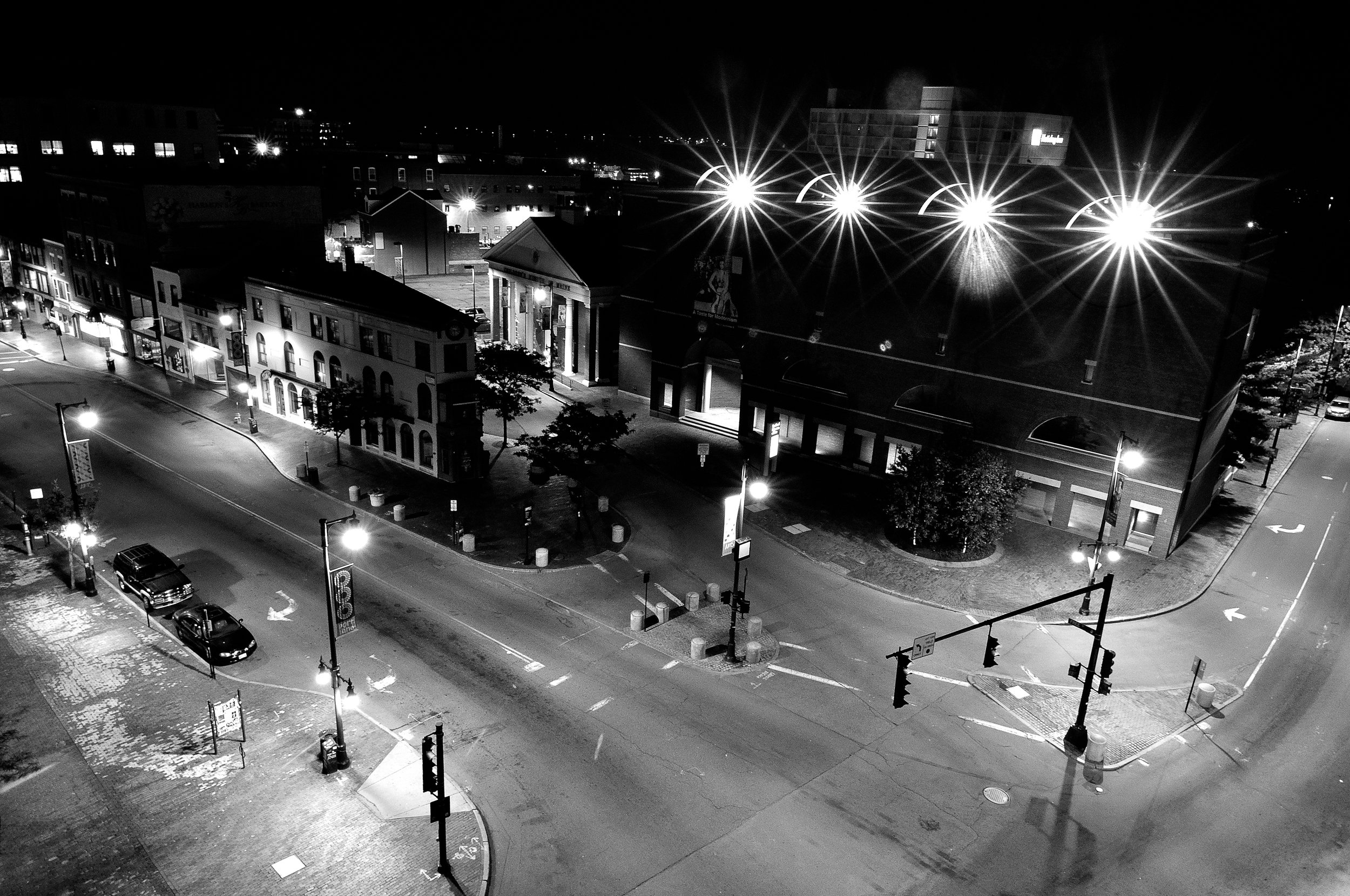
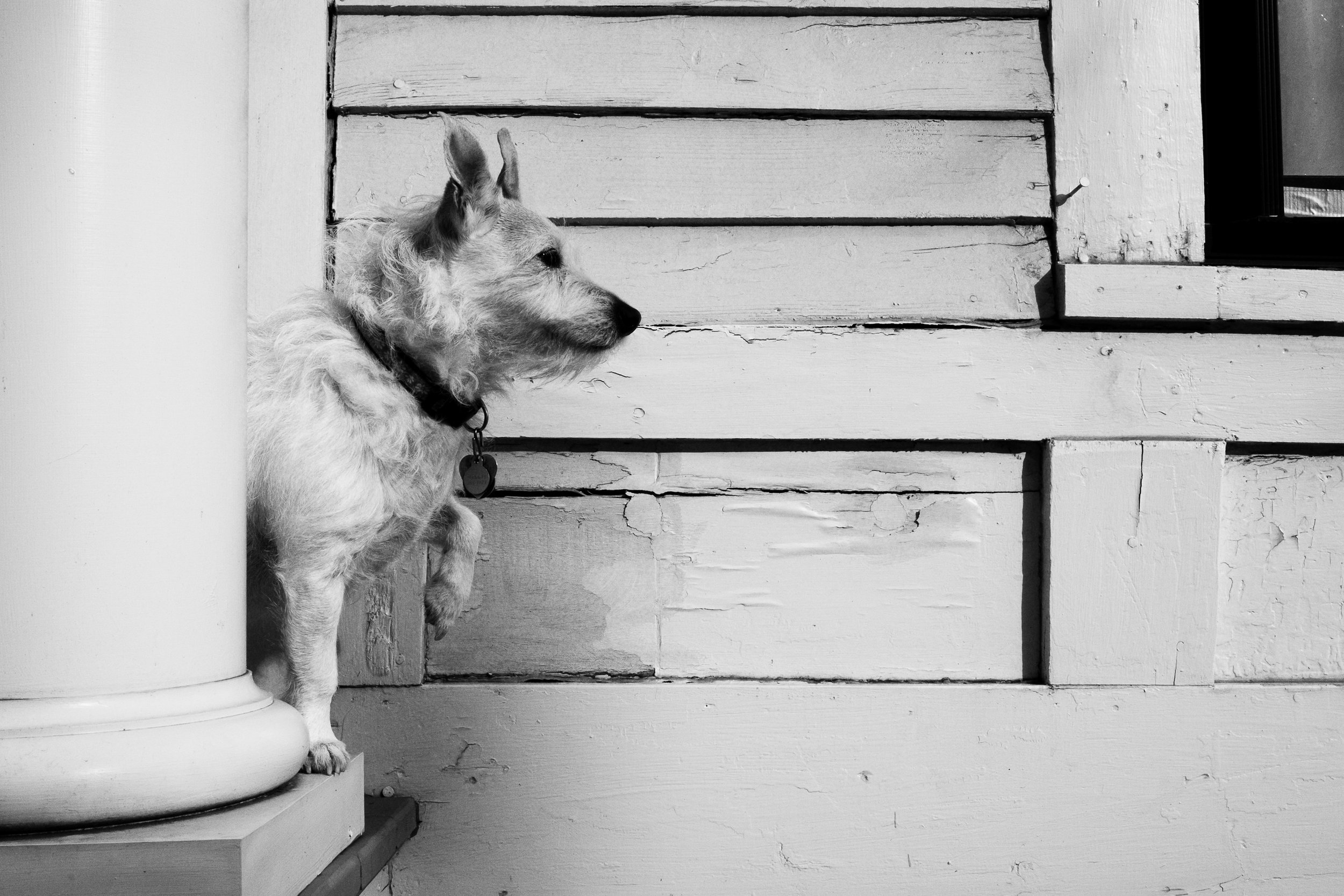
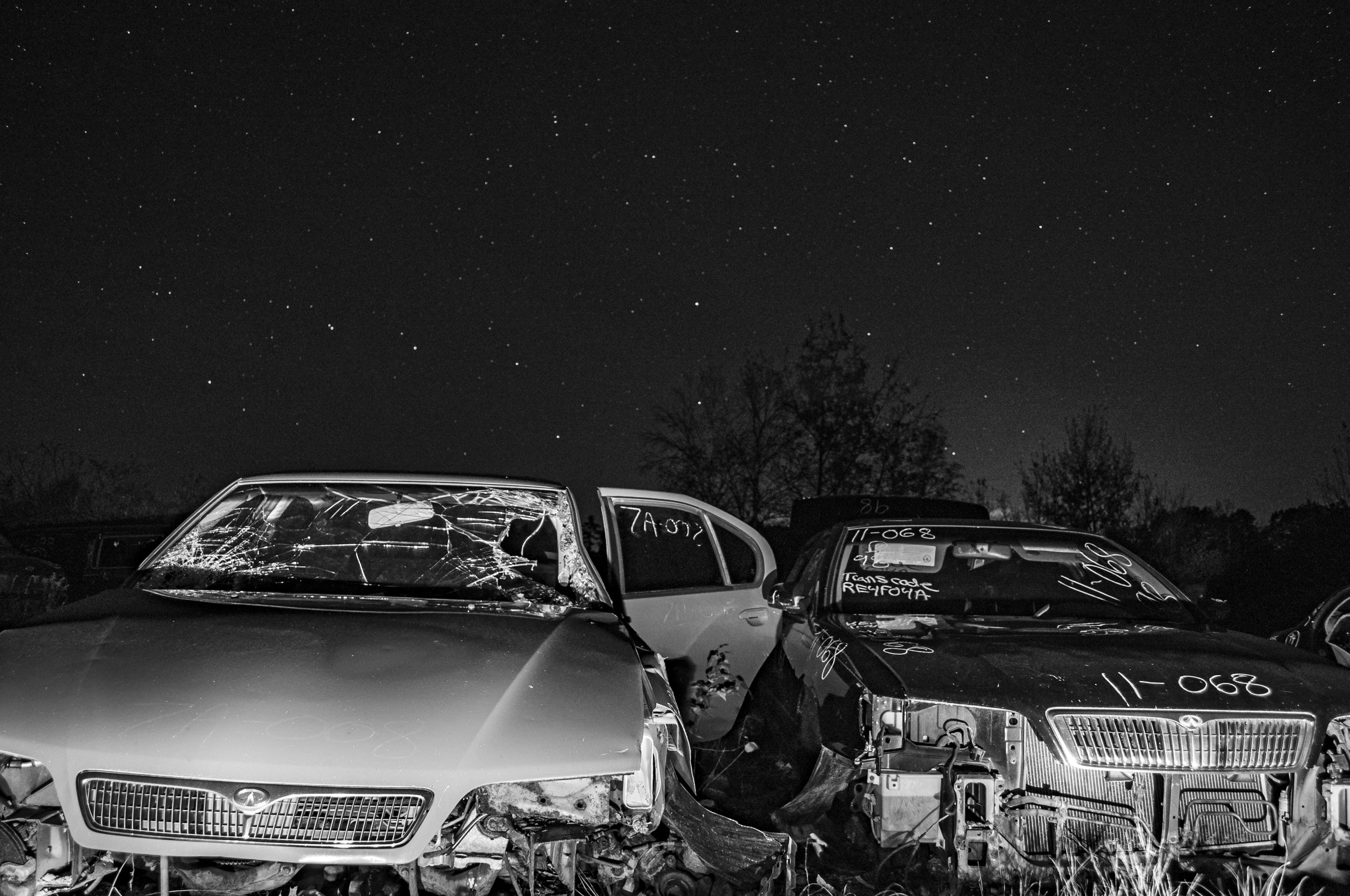
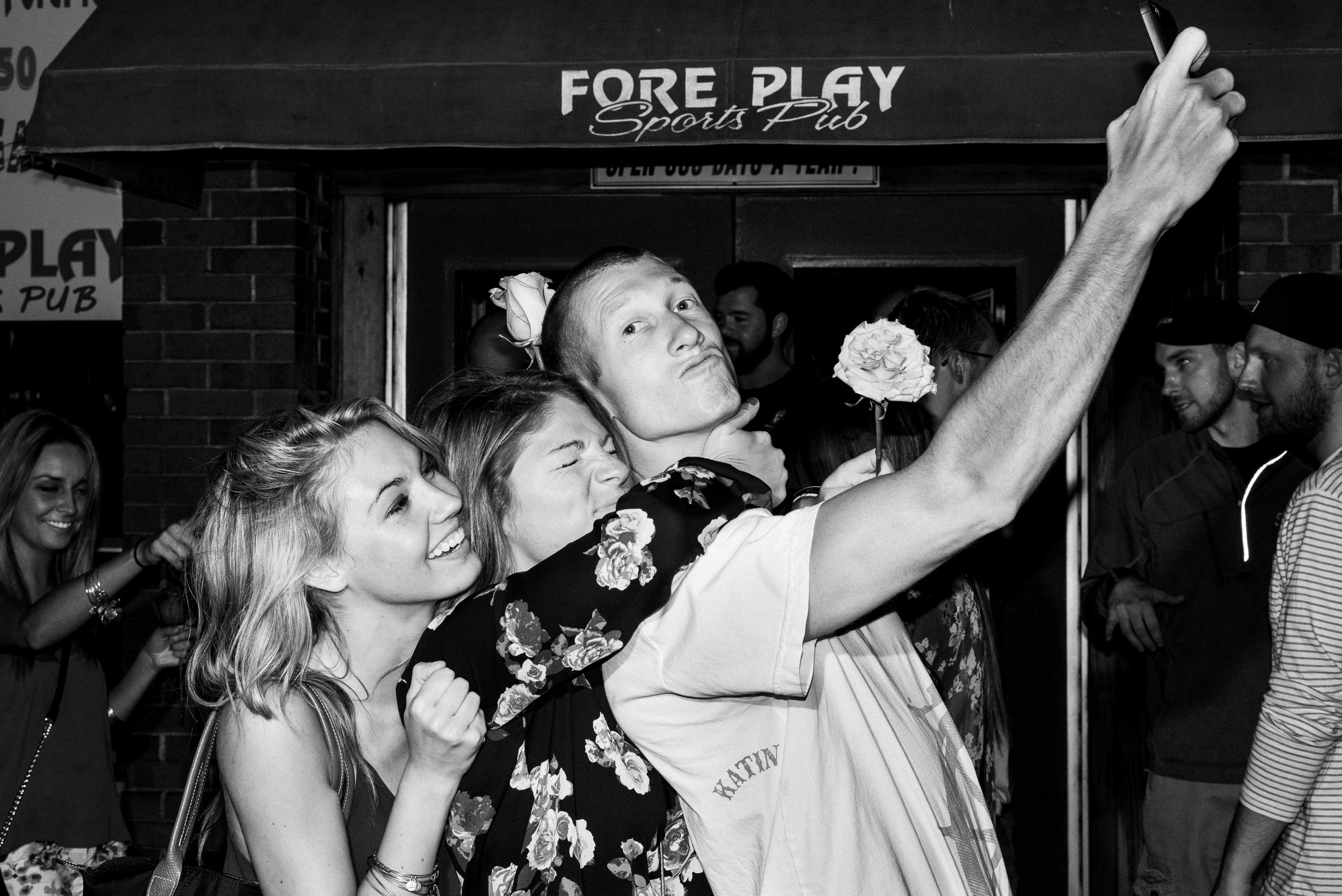


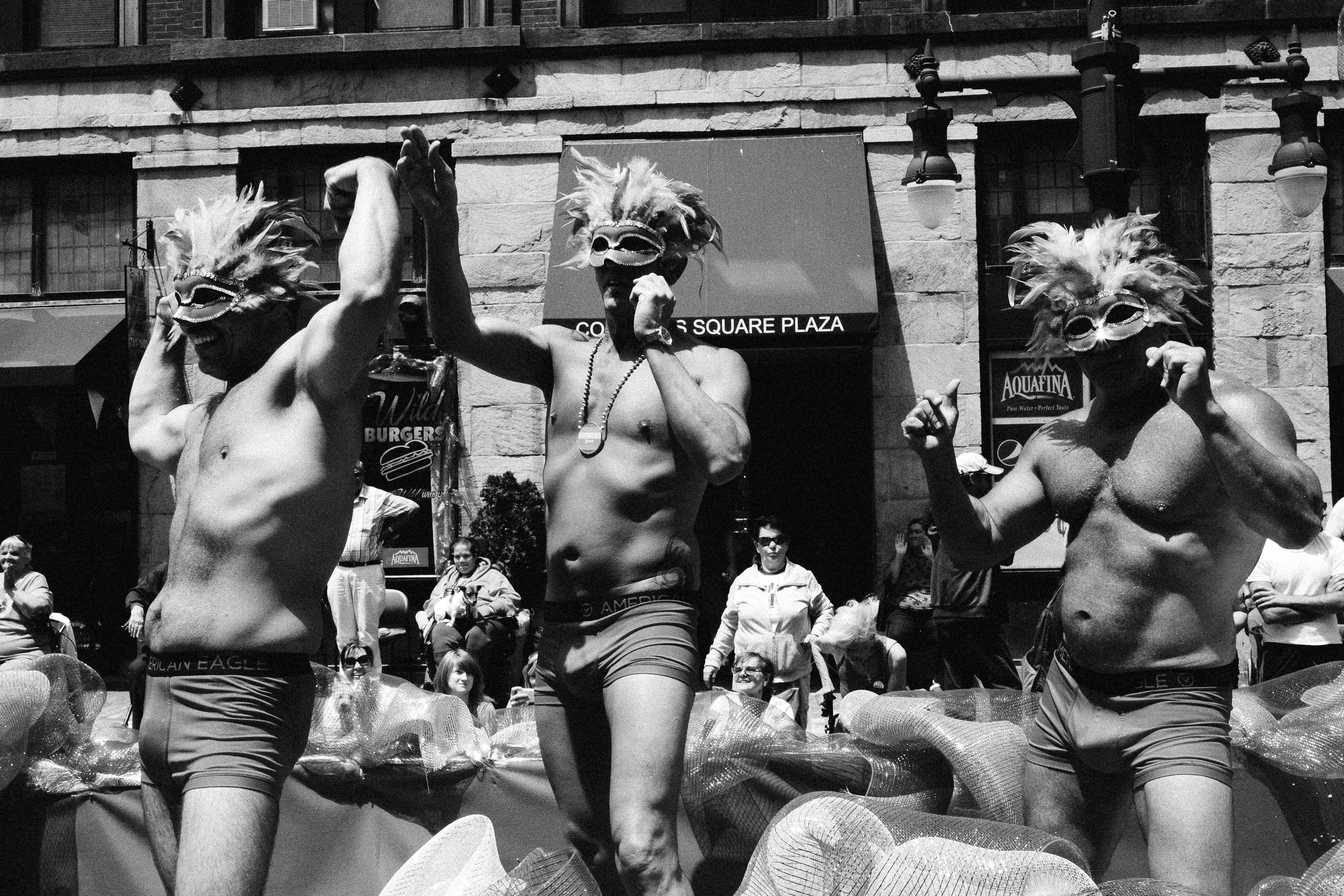


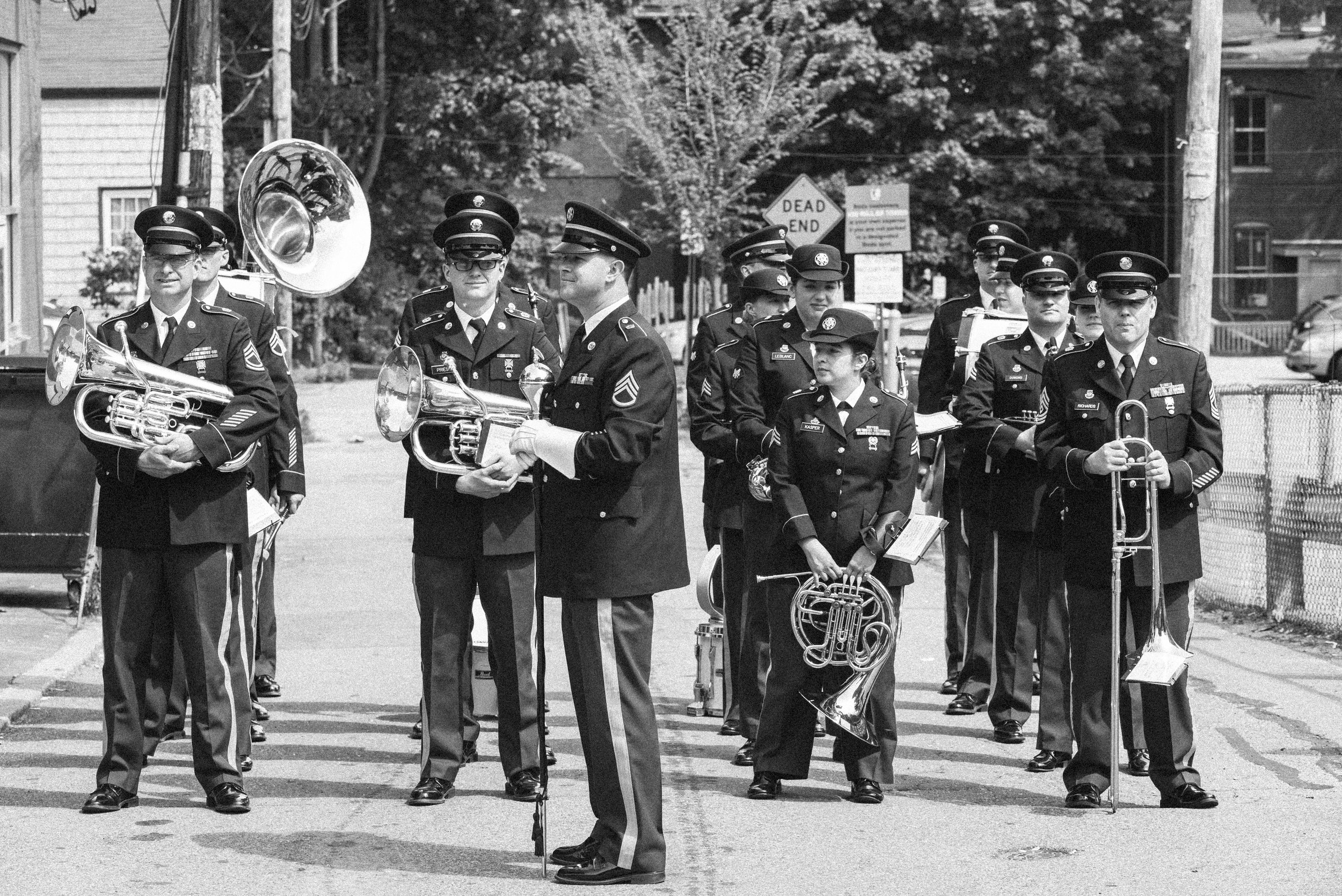
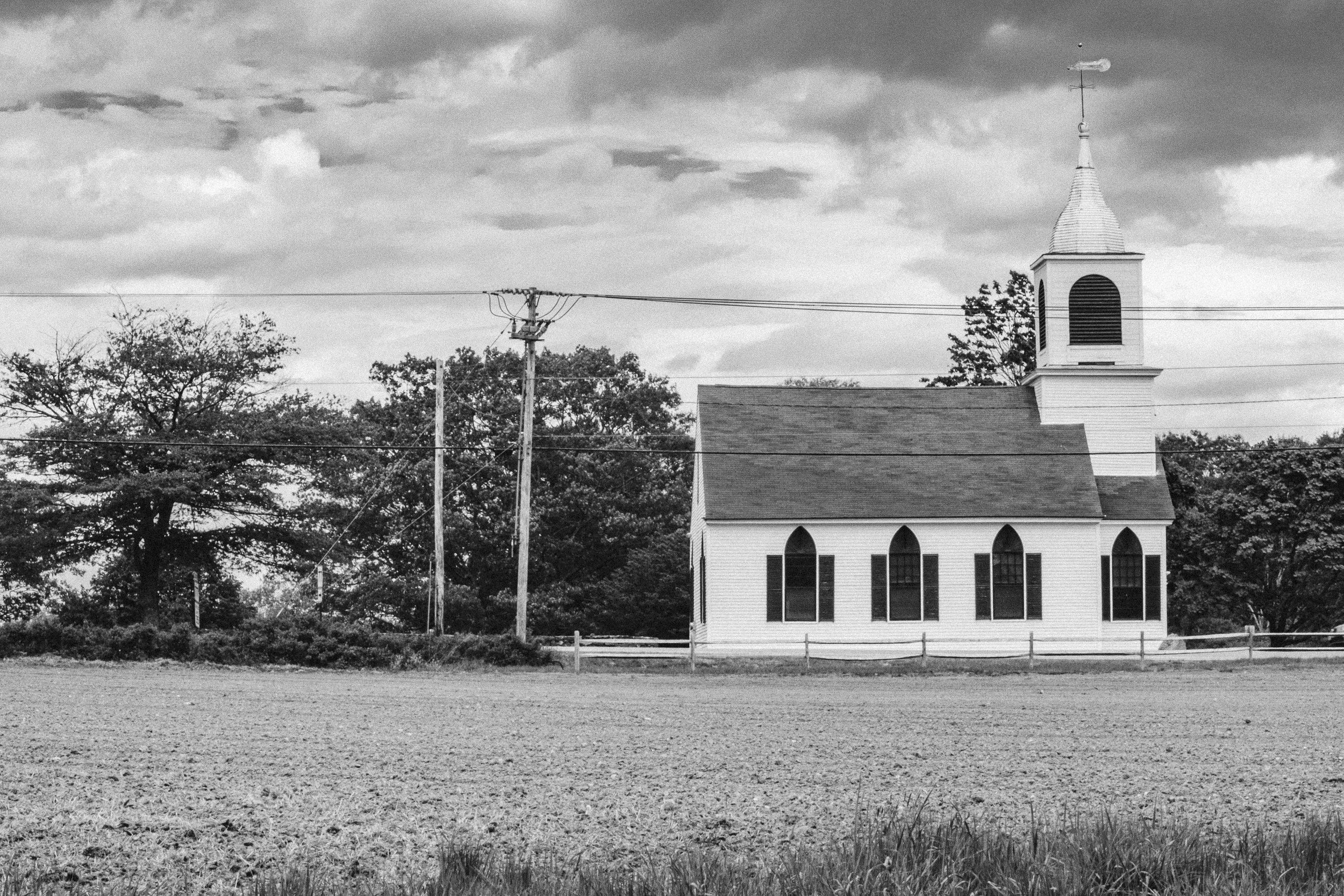
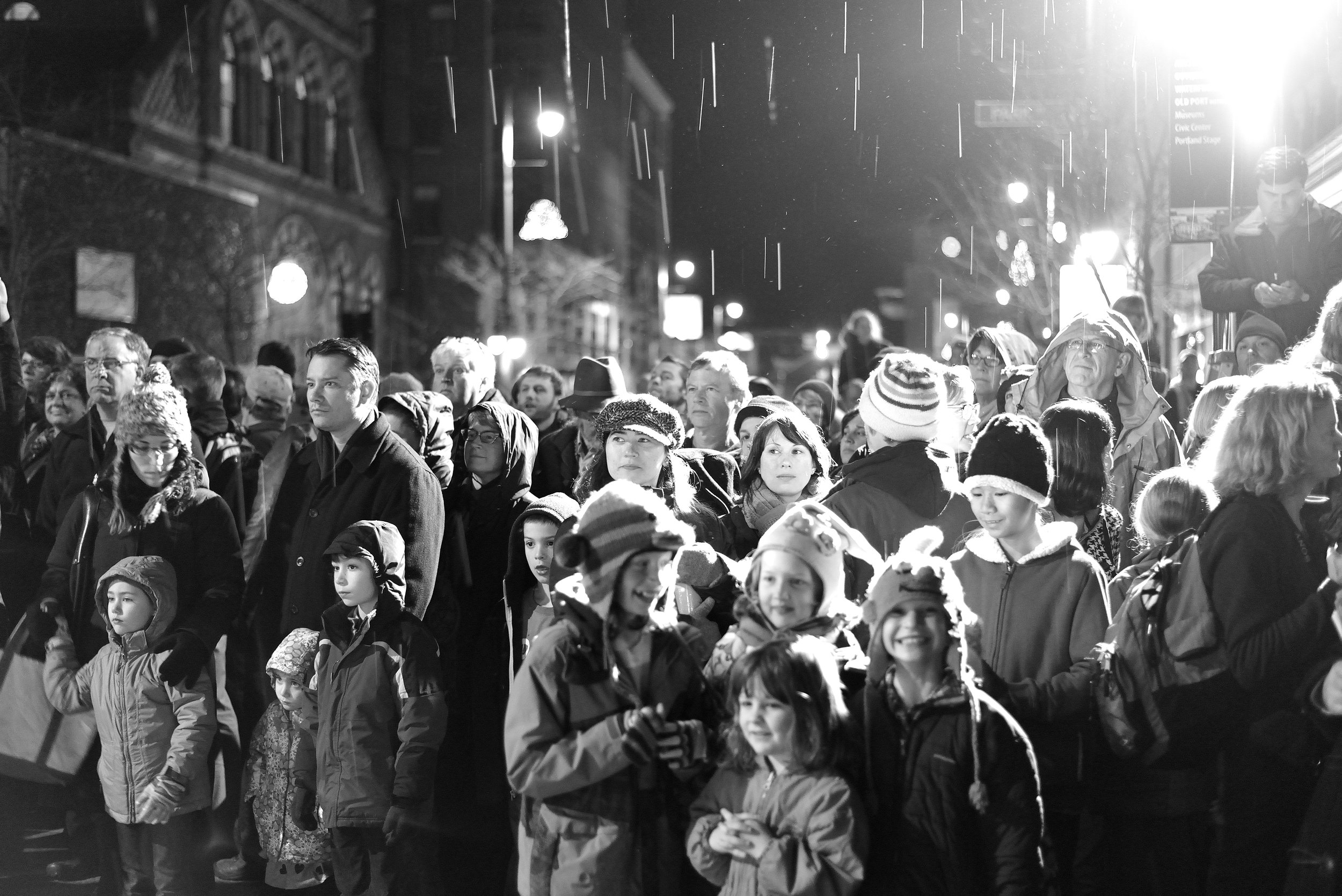
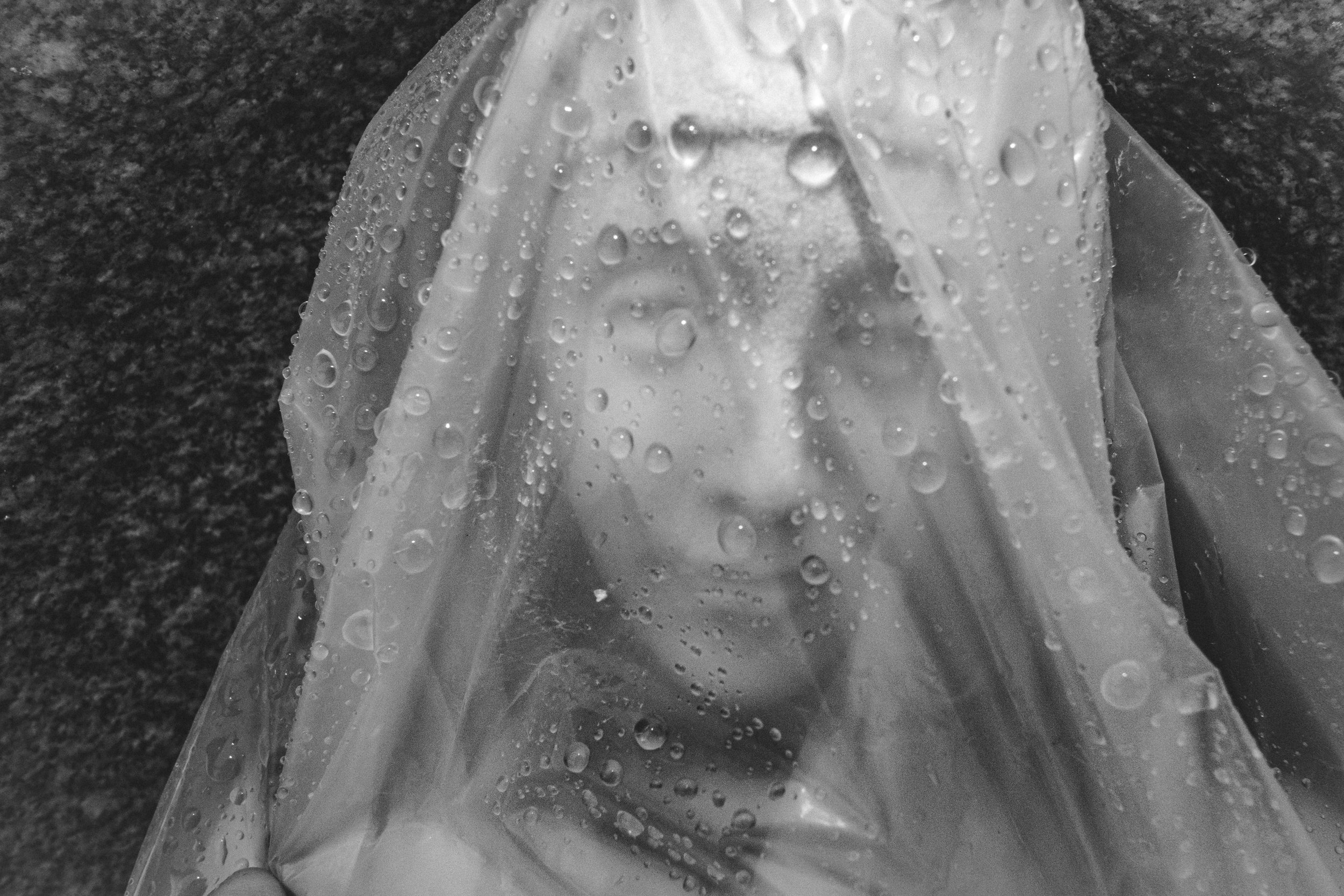
Nick Gervin has been photographing his home city of Portland, Maine for over a decade and his approach is not only truly unique, but unrelenting. From his personal archive of over 60,000 photographs, Nick presents 20 works that boarder between surreal and documentarian in nature at the same time. Capturing Portland and the Portlanders like a true visual historian.
carol eisenberg
Carol Eisenberg, Xanadu 3, Xanadu 2 and Fictive Landscape 3, 1/8, Digitally constructed photograph, Inkjet print, 22.5 x 30 inches, $2,350 each
I create constructed digital images that blur the line between painting and photography. This duality of aesthetics is an essential component of my approach to art and life. I am drawn to the polarities of beauty and decay, the contrived and the natural, the excessive and the elegant. All of my compositions begin with originally sourced imagery selected from photographs I shoot in my studio or on location in mid-coast Maine where I live half the year or my neighborhood and surroundings in Tel Aviv, Israel, where I reside the other half, as well as on my extensive travels here and abroad. As an active participant in the feminist movement in the 1970s, the principles of inclusion, equality and justice underlie my work in the breadth of source material and the embrace of beauty in all its forms.
— Carol Eisenberg
deb Whitney
Deb Whitney, Pray/Prey #1 - 5, 2022, Thread and photo transfer on cotton, size, $550 each
Rebecca Solnit says it best: It doesn’t really matter if they are coming for you, because they are coming for us. “Us” these days means pretty much everyone who’s not a straight white Christian man with right wing politics. They’re building a broad constituency of opposition, and it is up to us to make that their fatal mistake. Let’s do this.
— Deb Whitney
todd watts
Todd Watts, 2-19-2016,2-10-2015, 7-31-2015 and From the Blanchard Weather Report series, 2016, Inkjet print, 13 x 13 inches, $1,600 each
“Baby, it's cold outside,” I know that song and hear it played on the radio each winter. I heard an exemplary rendition this past holiday season, performed by Willie Nelson and Norah Jones. The refrain was written by Frank Loesser in 1944, but I find it easy to imagine that they were the first words spoken by Adam to Eve, or she to he. Today, I counted how many times I mentioned the weather to my wife and she to me – twelve. The last thing she said as she slipped into sleep was, “Did you hear the weather report for tomorrow?” When I first meet someone and am unsure of what to say, I mention the weather. So do they. It is a safe bet that whatever weather opinion each holds, the conversation won't escalate to fisticuffs. Farmers I have met are never happy about the weather. It is either too cold or too hot or too wet or too dry. Never just right. Picnic goers, and skiers, and airplane pilots, and builders, and shoppers, and moms, dads, and little kids will all have their say. Weather is the context within which romances are born and murders are committed. The weather has influenced all our actions and everything else. I am not saying anything new here, but there is something new. Until recently, the weather has been, for the most part, anonymously consequential. The elephant that came to every picnic along with the ants. An unconscious unpredictable entity that we love when it suits us and hate when it gets in the way. It wasn't the asteroid but the resulting weather that brought on the Paleocene. Now, it is argued, we find ourselves in the Anthropocene. We arrived here on a wave of unconsidered action and we have done the impossible. We have altered the weather.
The Blanchard Weather Report began as a visual report sent to friends who asked. A visual conversation. A wordless documentary discourse carried on over the internet. In those first pictures, there were objects – trees, and rocks, and streams, and grass – but the weather was the subject. On a particularly windy day, failing to keep my footing and wondering if that loud sound was my rib cracking – it was the screen on my phone – I began to think of the weather as an object. Equal to the flowers, and to the mountains, and to the lakes. No less solid than a taxi careening towards a jay walker on Herald Square. Weather is affecting and I felt affected. I blame the weather for my damaged phone and also for umbrellas that collapse and for galoshes. But the weather also provides color and line, mass and movement, time and history – and these are building blocks of visual art. Add to these, the recent political wrangling, economic turmoil, social unrest, and general uncertainty surrounding the weather, and you have all of the elements this artist requires to work.
The Blanchard Weather Report started as document; but it took a left turn. The natural relationship of the parts came undone, as happens in art, all of the elements demanding their place but not in any particular order. Color and line, mass and movement, are present but not bound by time and history. Time begins when we see the picture, and history follows. Time is the picture, history is the viewer. Artworks are new to nature, and in the Blanchard Weather Report I am adopting nature. There are no people in these pictures. There is no need because their presence is implied. In art, our presence is always implied. As we look at pictures, we become complicit in their making, as we are in every artwork ever made.
– Todd Watts
“Isn't this a lovely day to be caught in the rain? You were going on your way, now you've got to remain” Irving Berlin, 1935.
Katia Dermott
My existence has always been held in relation to the land. As I photograph both people and places, I focus on the parallels between them. The land feels loss and carries histories the same as us. Though the landscape is a place of escape, it is also a mirror into the worlds in which we already exist. I seek out the quiet, drawn to moments where no one else is looking.
– Katia Dermott
Brendan bullock
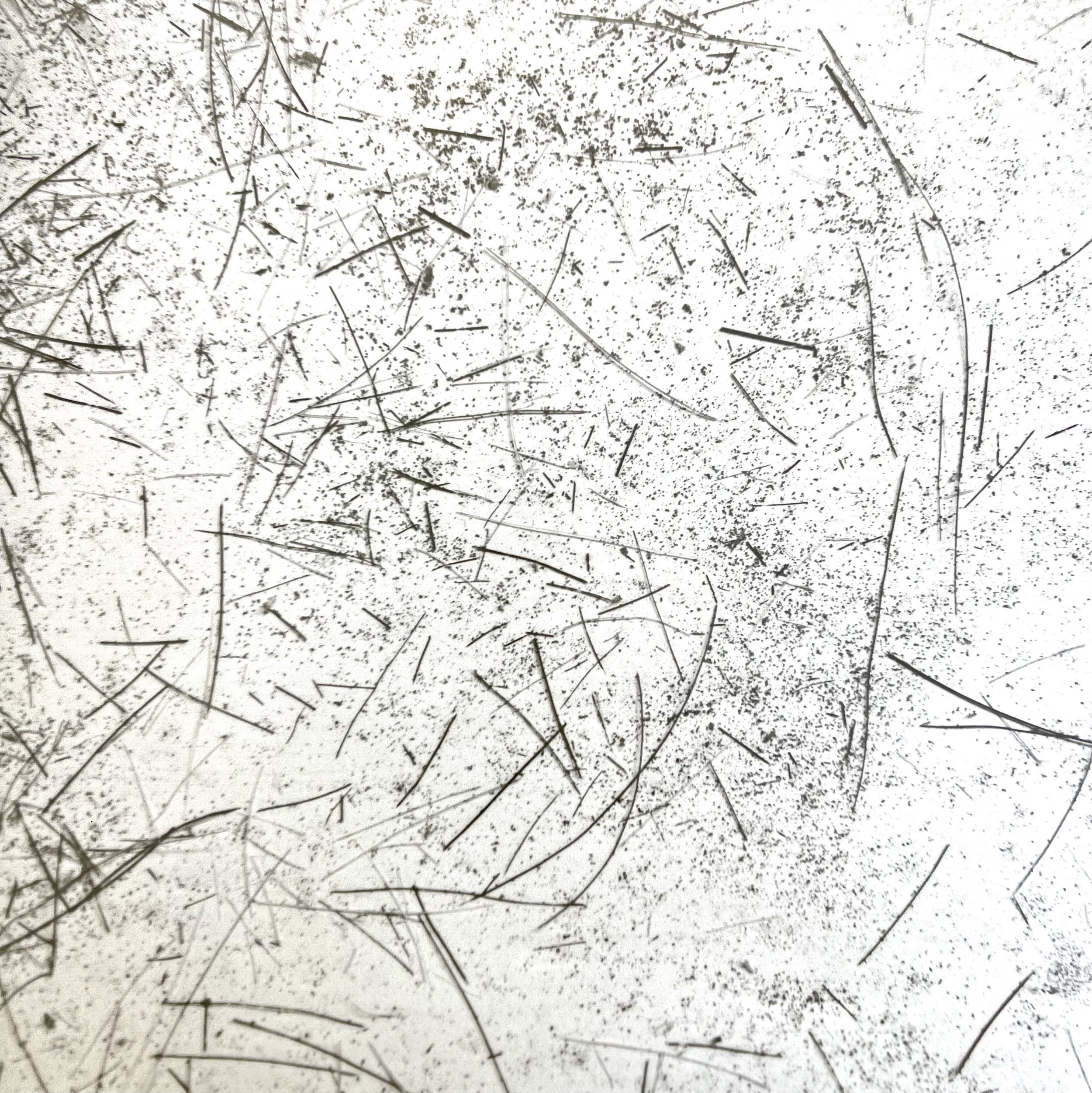
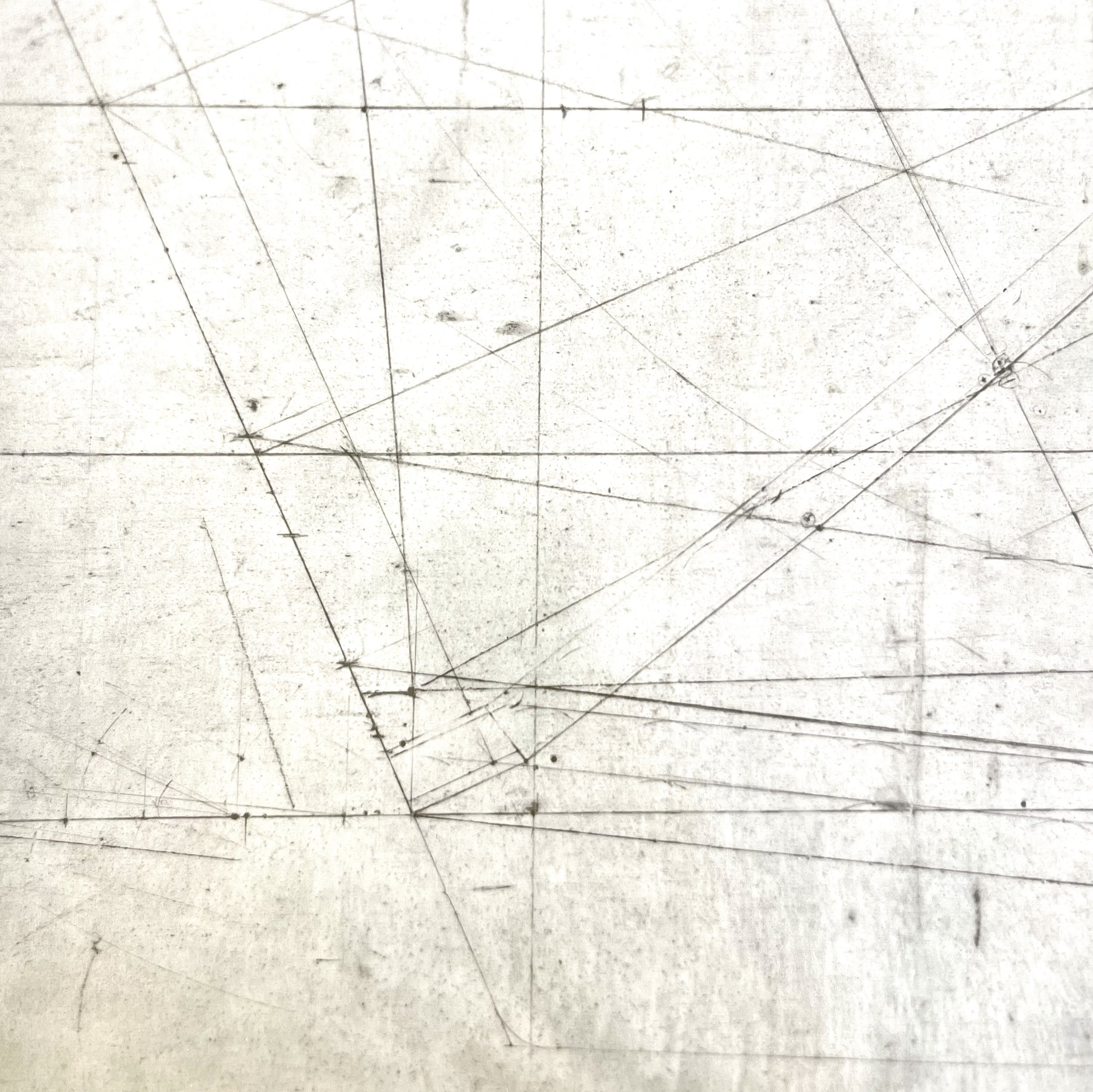
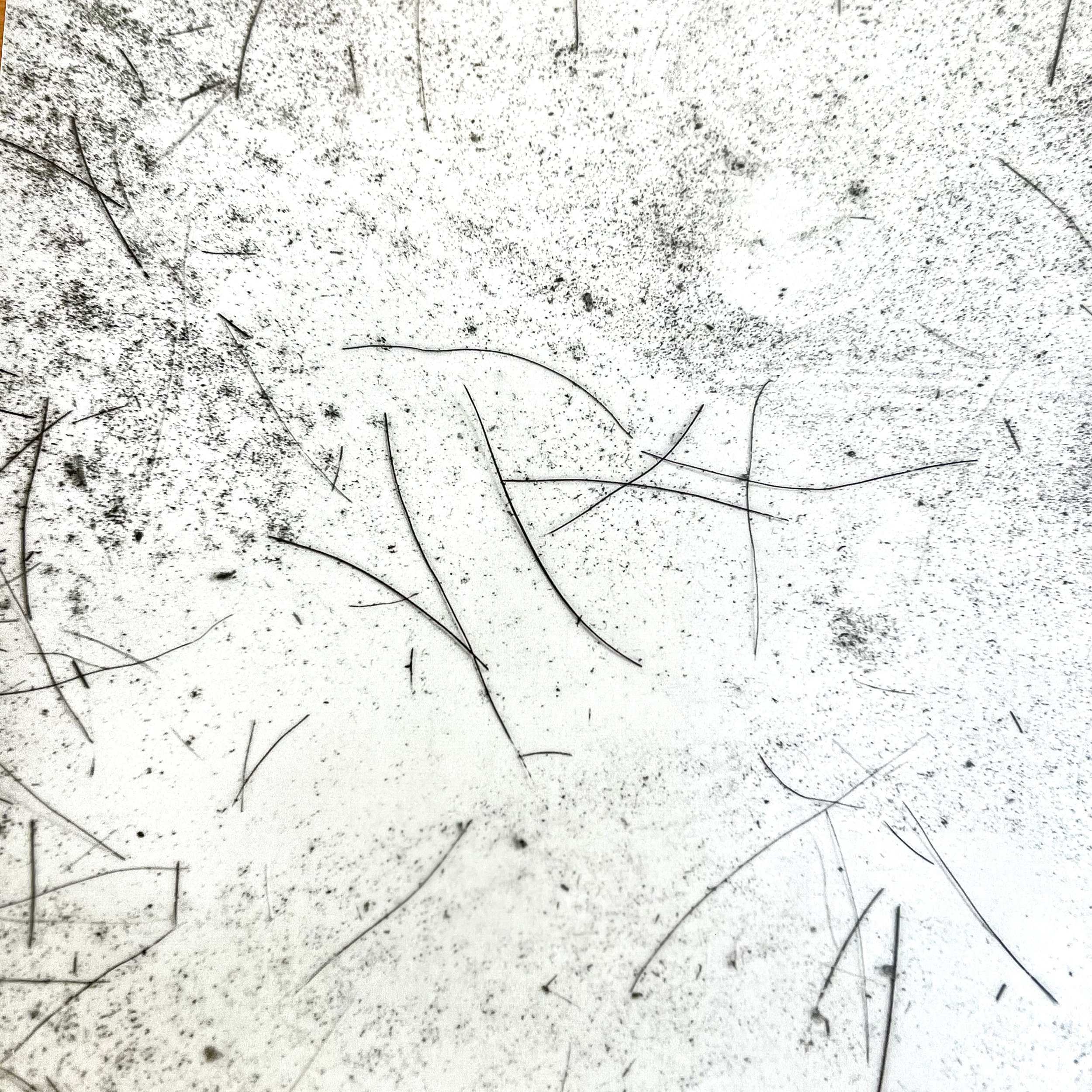
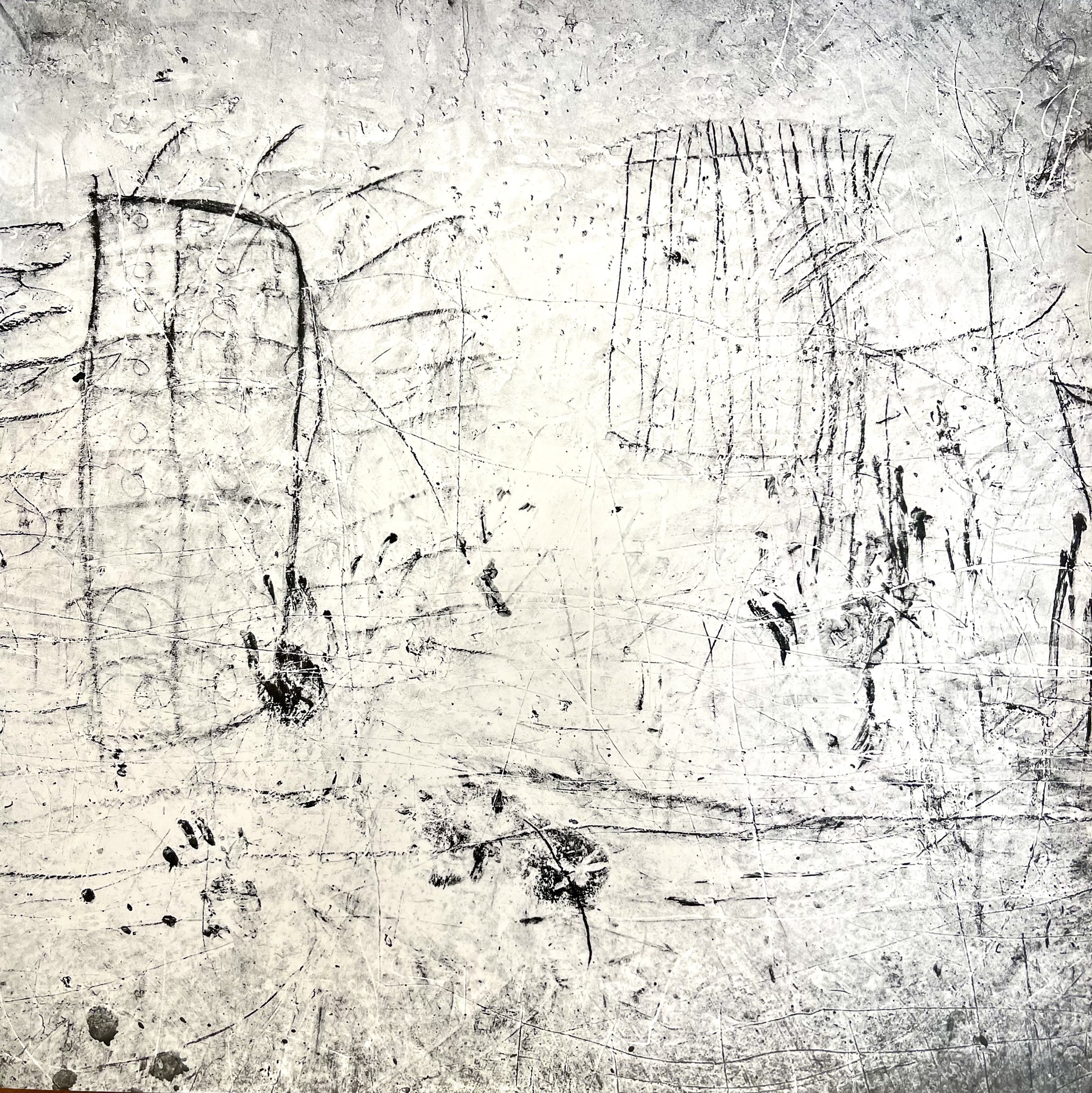
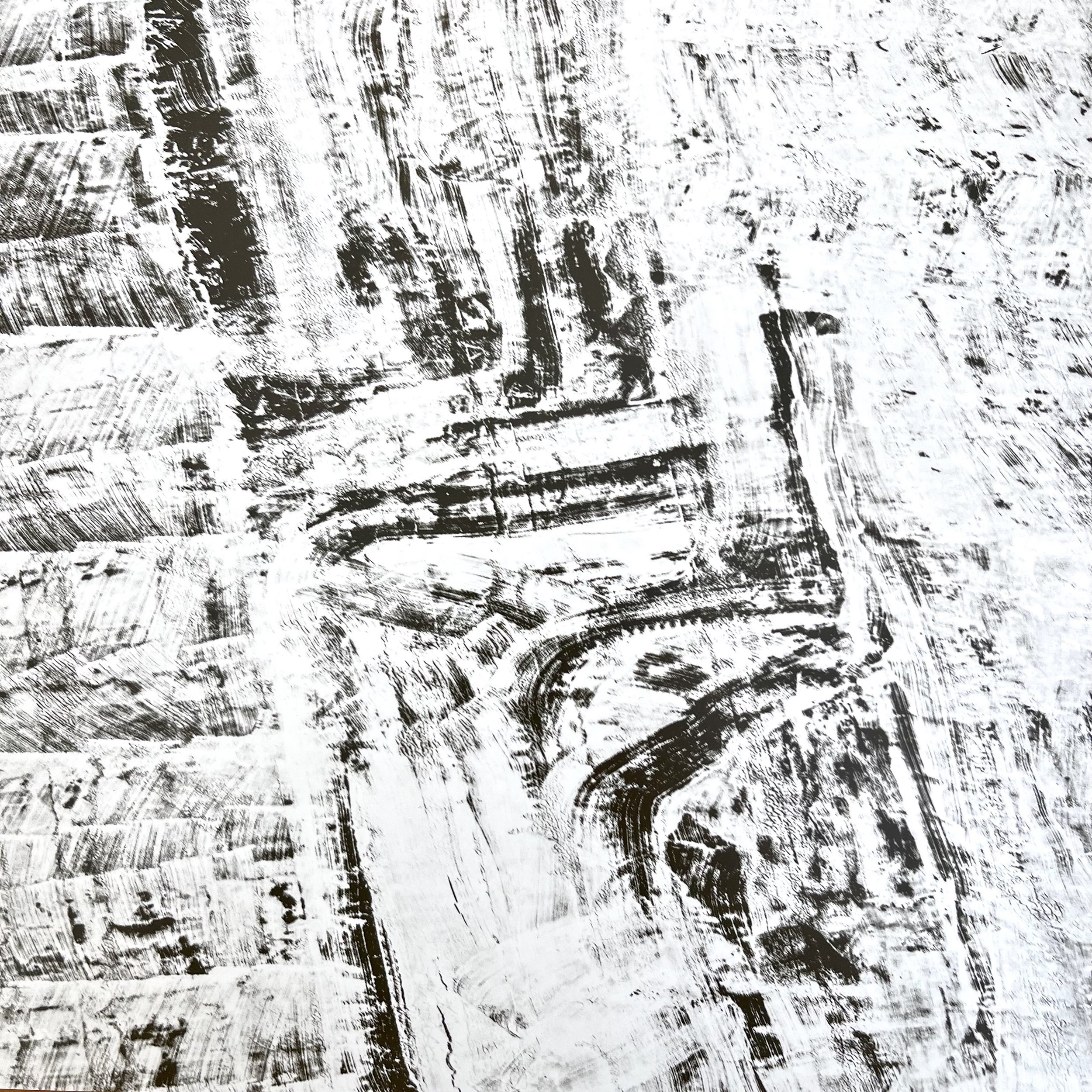
There Is A Beautiful Order To Chaos Pts 1&2
Finding order within chaos is an organizing principle within photography, perhaps even its raison d’être. Compositional considerations in the medium are as much about exclusion as about inclusion. The camera’s four cornered frame is placed around this thing or that, saying, “This is interesting. This is beautiful. This is worth looking at closely.” Extracting an aesthetically pleasing order from chaos is as applicable to war photojournalism as it is to creating fine art abstractions. I am interested primarily in seeking out two classes of things - the beautiful, organized chaos within naturally occurring materials and substances, and that same organized chaos left behind in man-made detritus. This series of work is in two parts, illustrating these two aforementioned classes. The found, man-made details are collected from various places I have worked and traveled, and the naturally occurring patterns are taken from publicly available images of viruses that are currently the focus of our collective attention. These images are created with a hand-applied emulsion and exposed in sunlight, resulting in unique prints - each differs subtly from the next. The border of each handmade print is generally chaotic with its splatters and brushstrokes - for this series, the choice has been made to over-mat that chaos to only present the image cleanly, illustrating the curatorial idea of inclusion vs.exclusion.
– Brendan Bullock
From our Collection of Secondary market finds
Noah krell
Noah Krell, The Hostess, 2007, Inkjet print, 27 x 32 inches, $1500 Framed.
Noah Krell is a Portland based photographer, a master printer whose work is in many important collections. This images comes from a larger body of work called At Home made in 2007. There is only one available and the provenance is lofty and interesting. $1,500.
Caleb Cole
Caleb Cole, From the series Other People’s Clothes, 2013, C-print 8 x 10 inches, Unframed print, $1,650.
Other People’s Clothes, a series of photographs by Caleb Cole begun in 2007, examines gender, age, sexuality and identity. Though Cole’s physical body is present in all the photographs, he does not view the works as self-portraits. Instead, they are depictions of people Cole has never met “but with whom [he] feels familiar.” Each figure is a character, representing a variety of societal roles and types. His physical body becomes a place holder, the “common denominator” in each of the works. By depicting the same body with different expressions and clothing, Cole allows the character to come to the fore. The clothes represent the “outside world,” or the persona people don for society. Cole’s facial expressions are meant to contrast the public appearance, hinting at the inner world of each character. These photographs illicit powerful reactions among viewers, ranging from laughter to shock to sadness.


